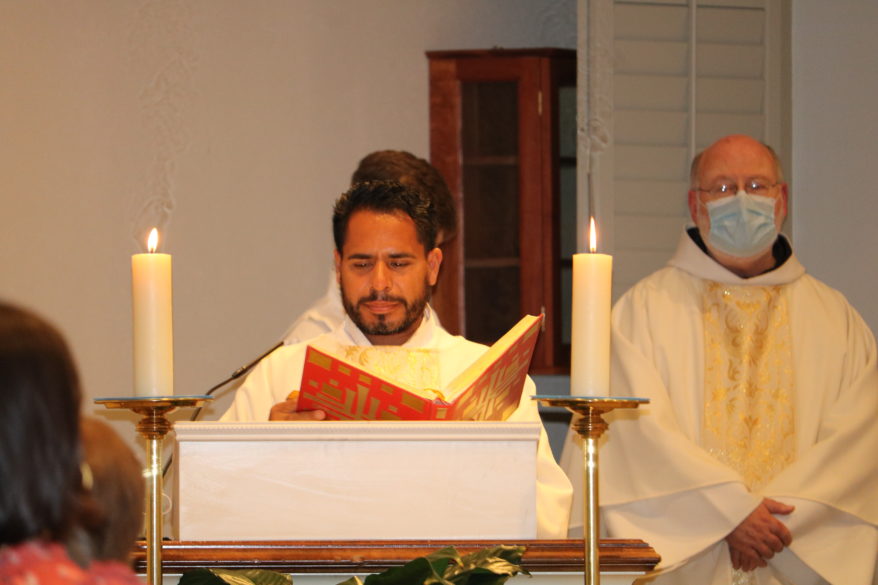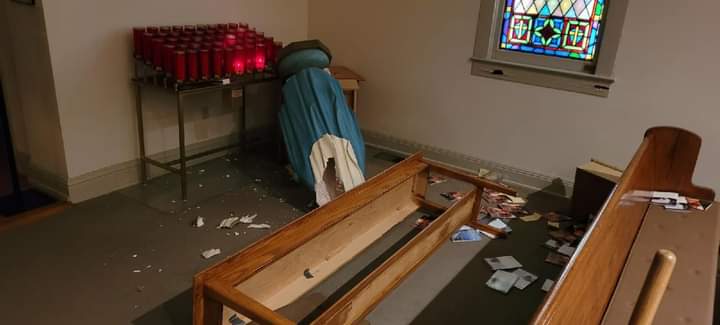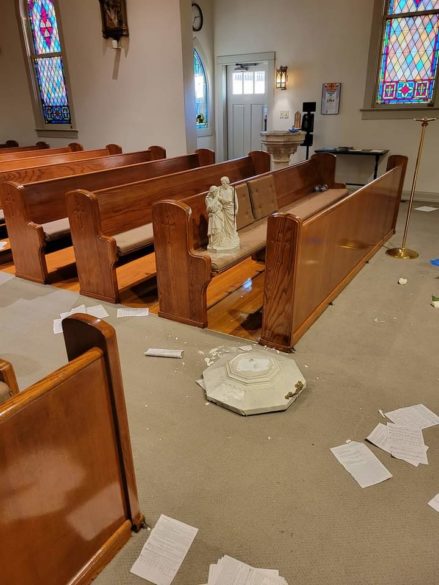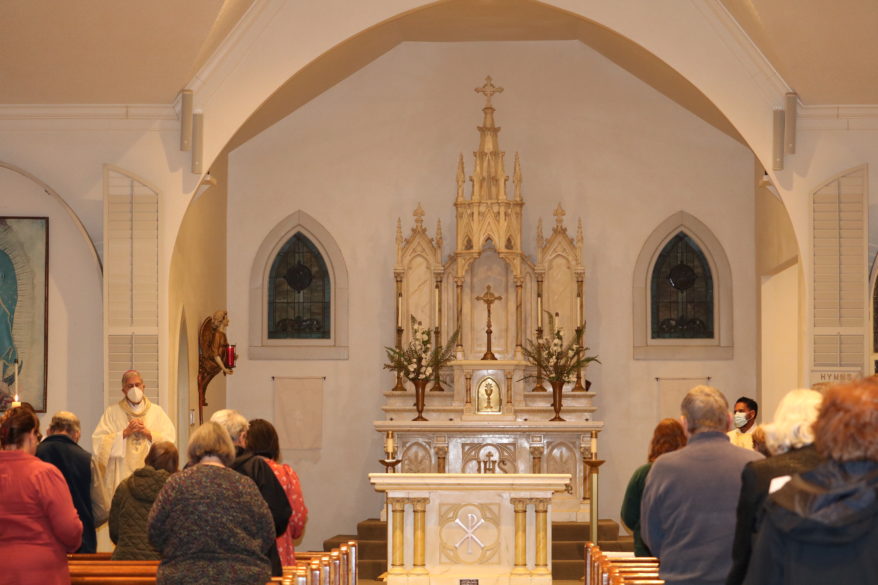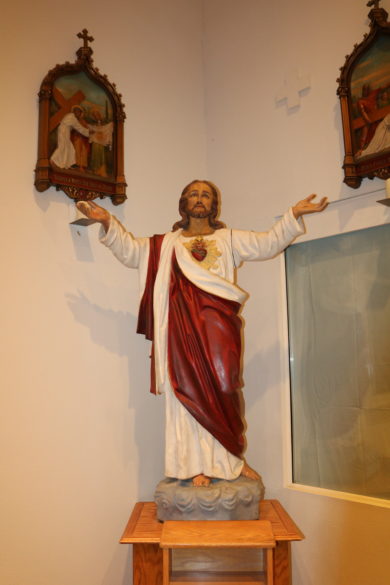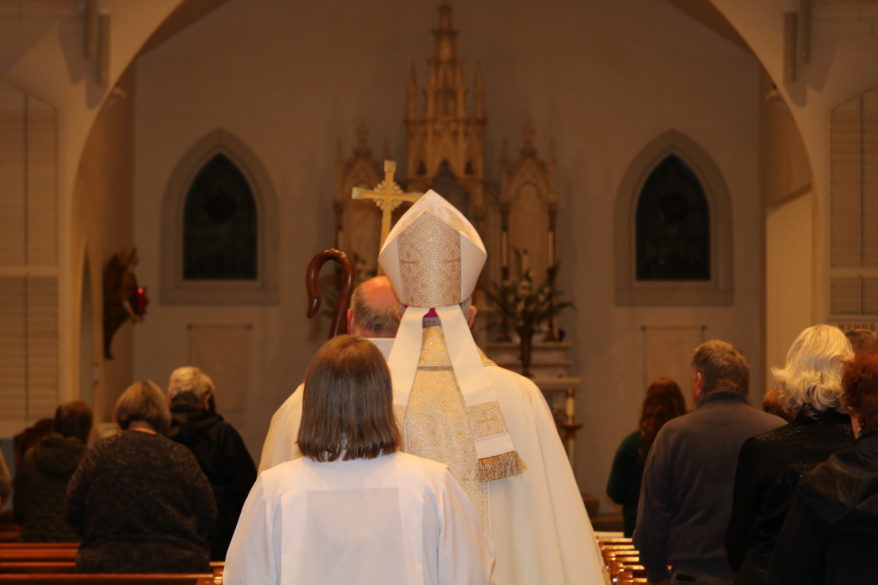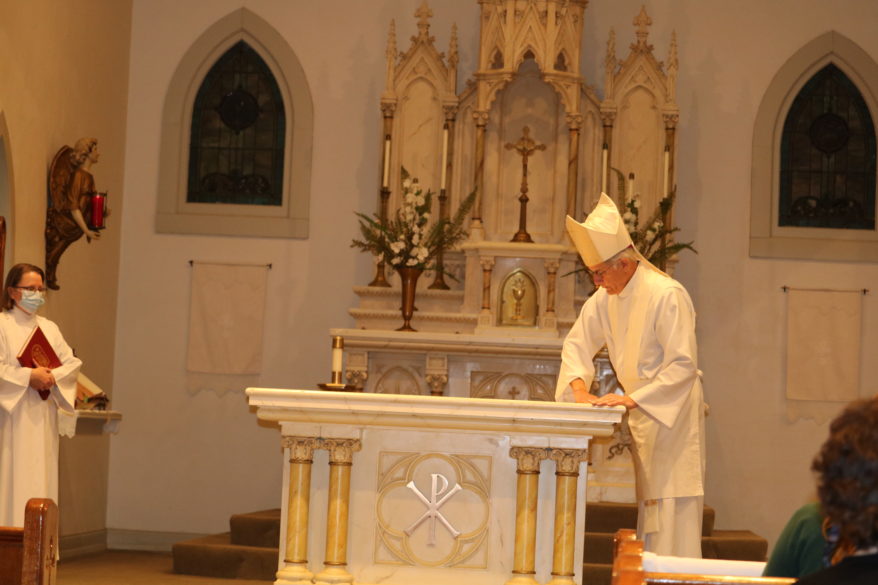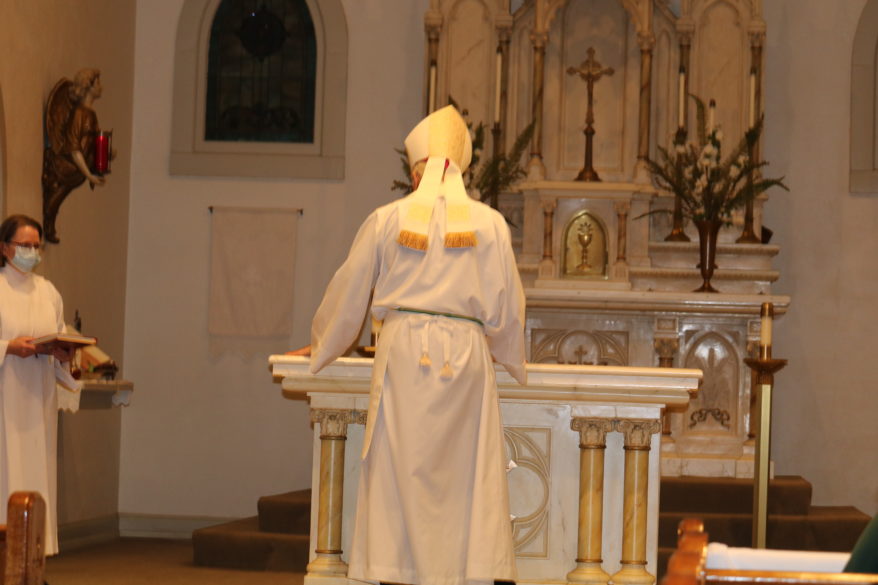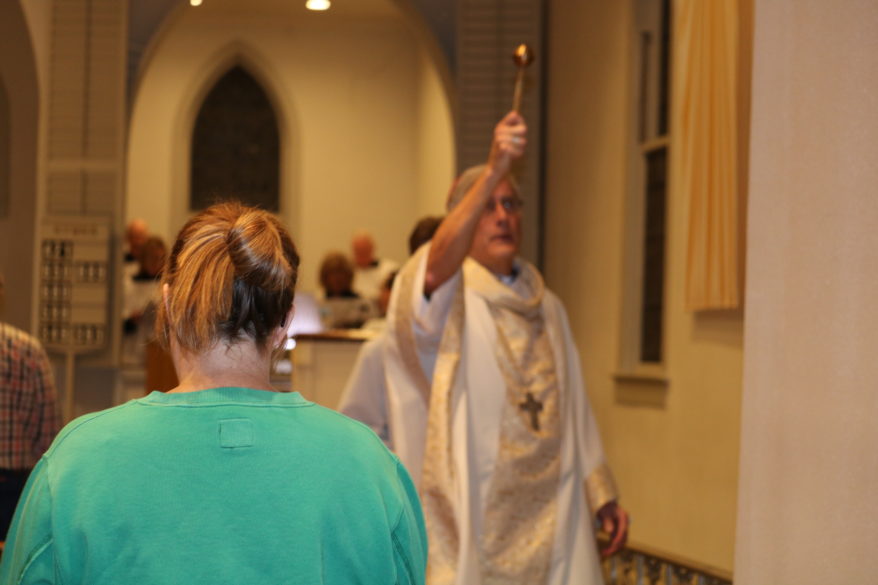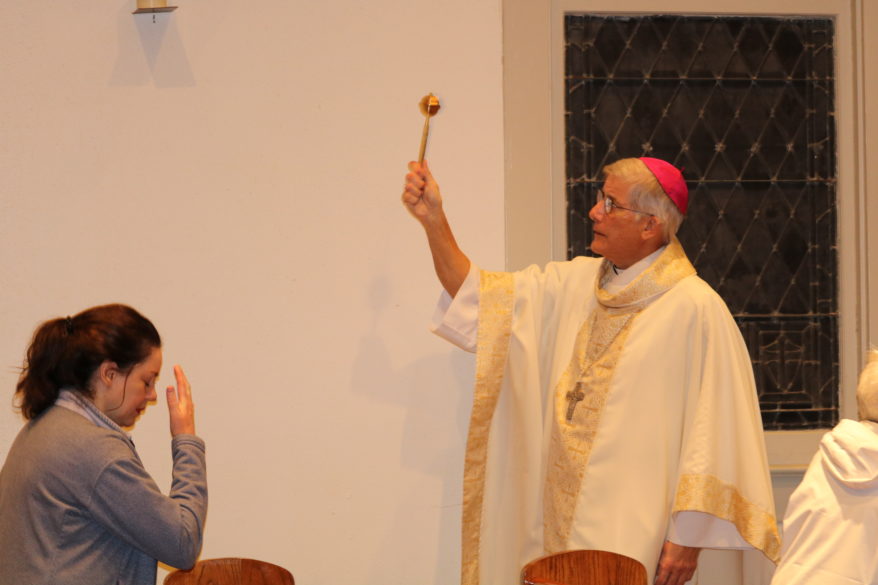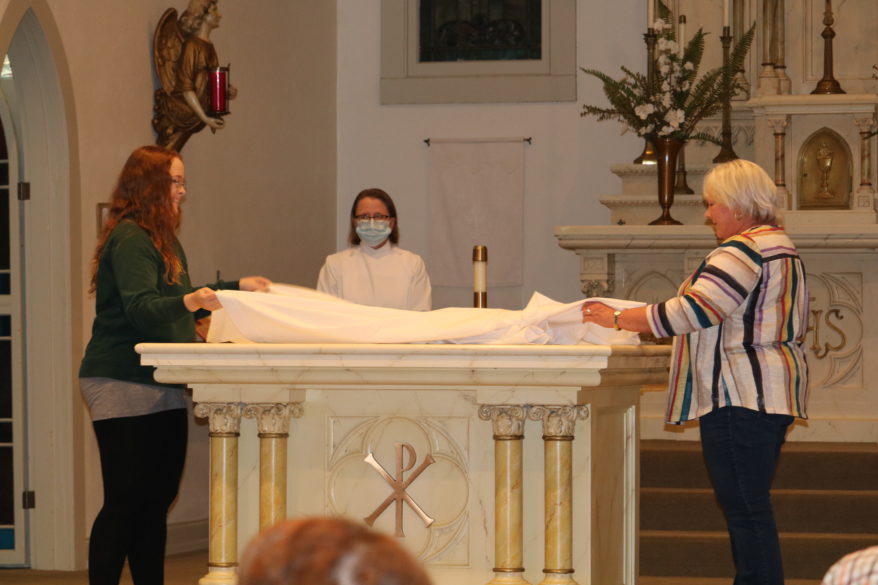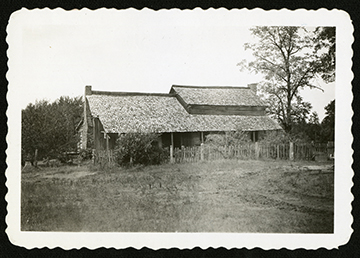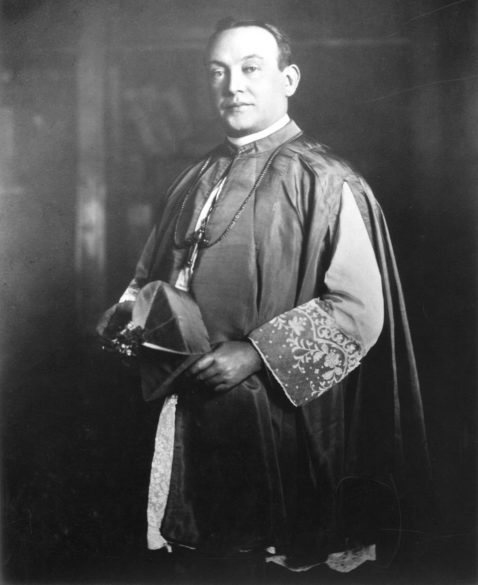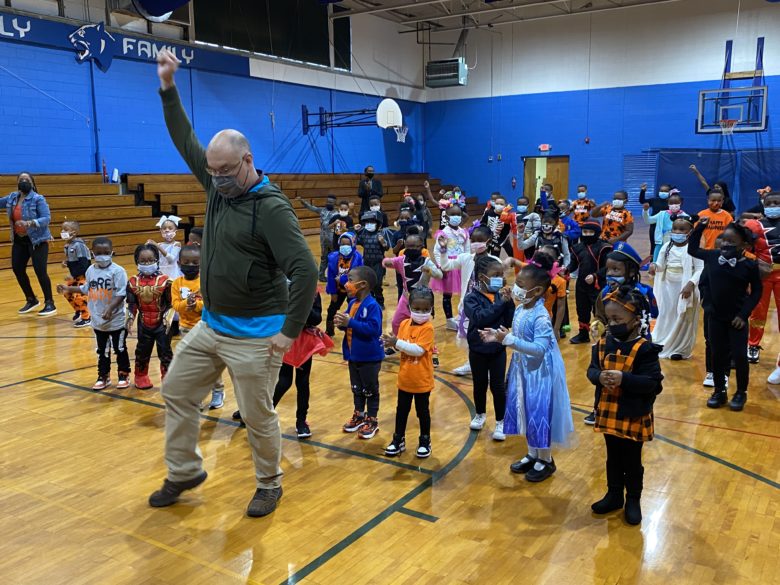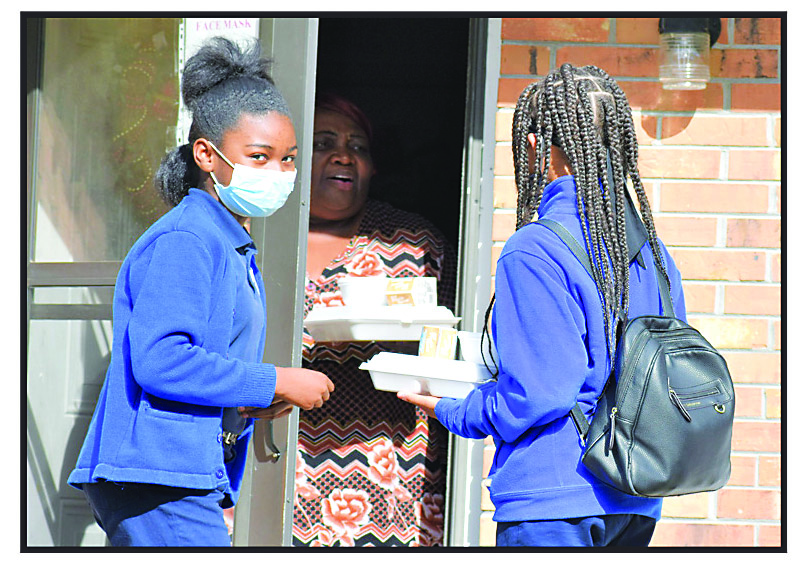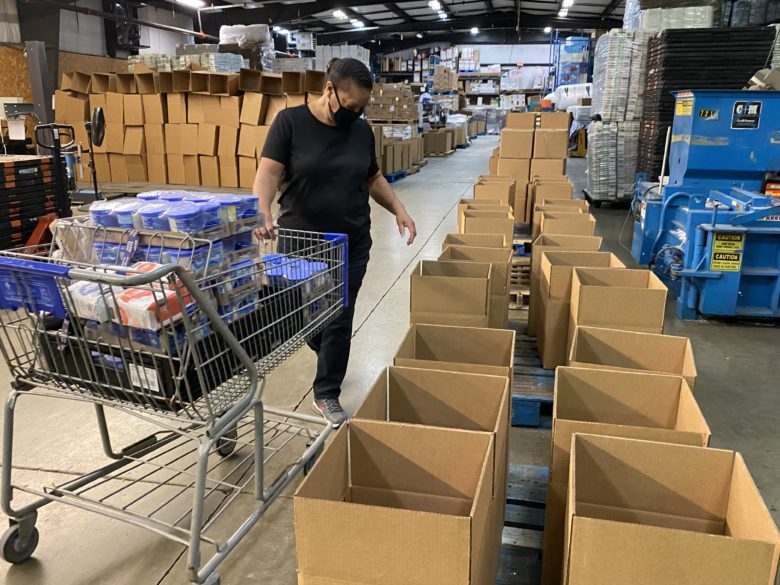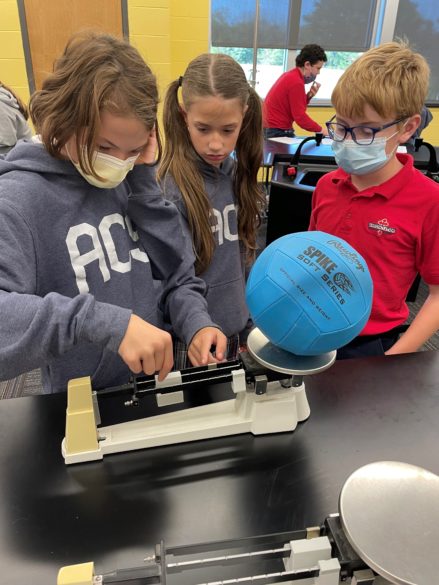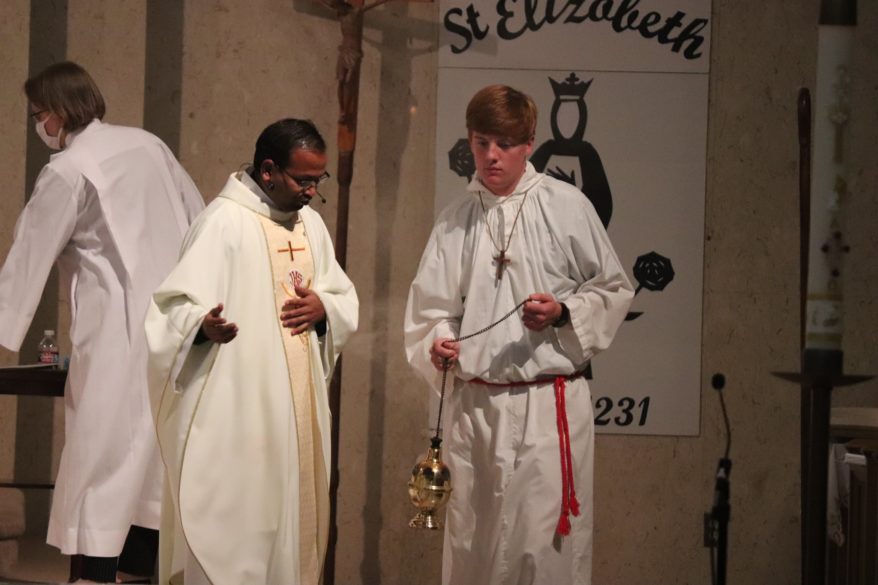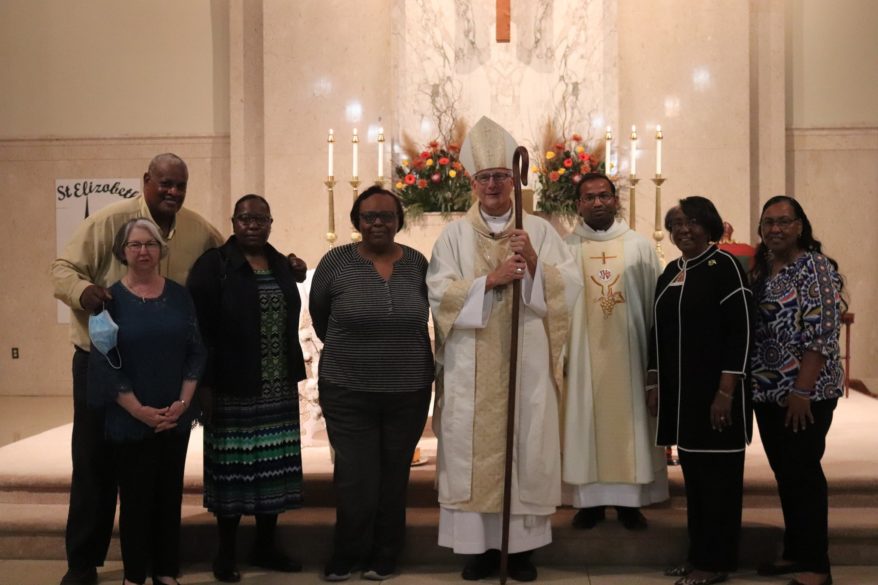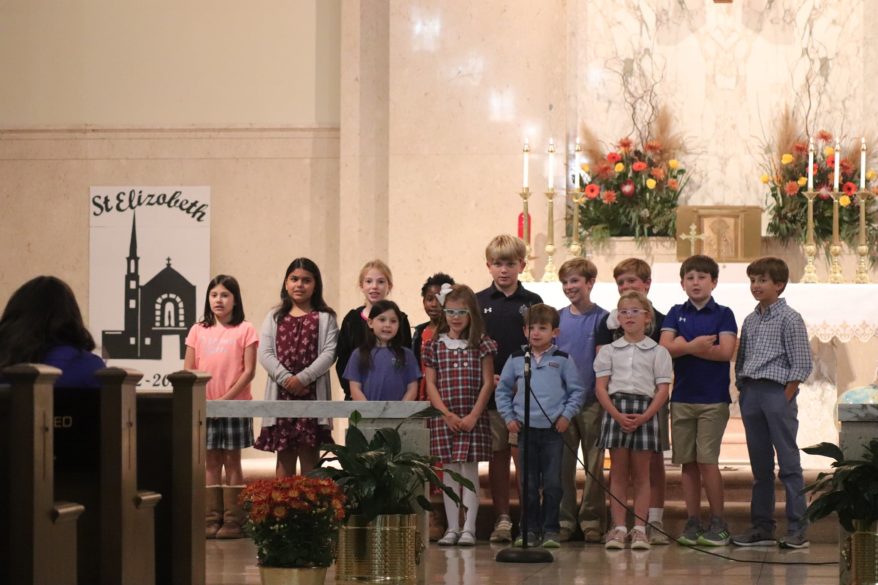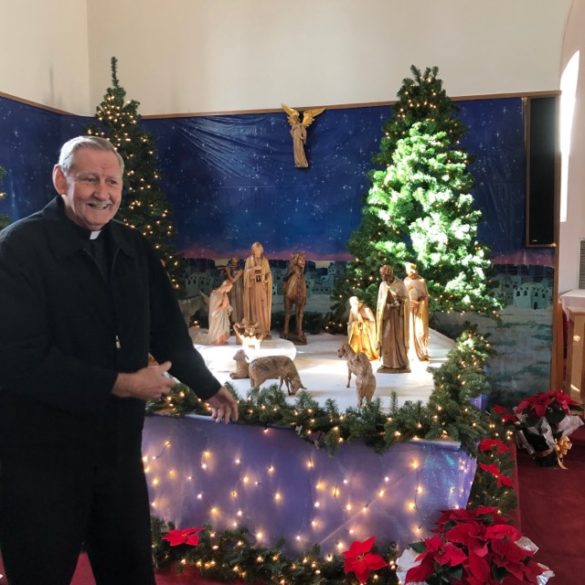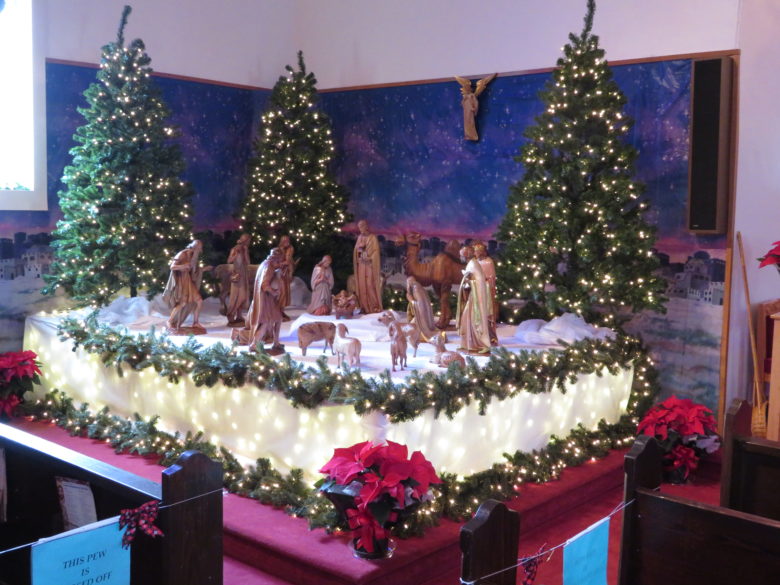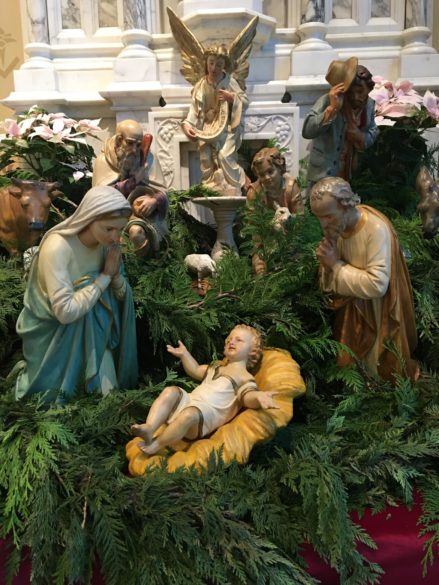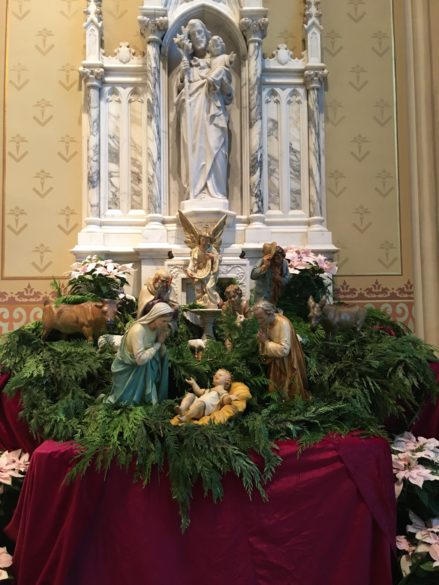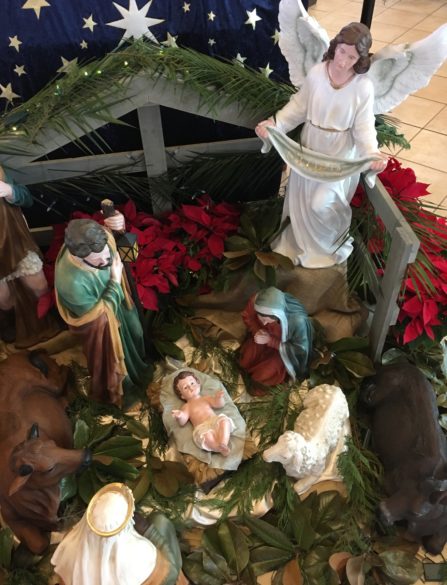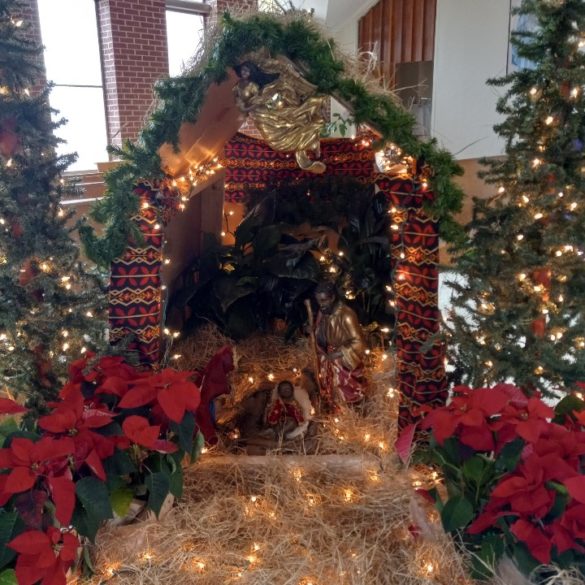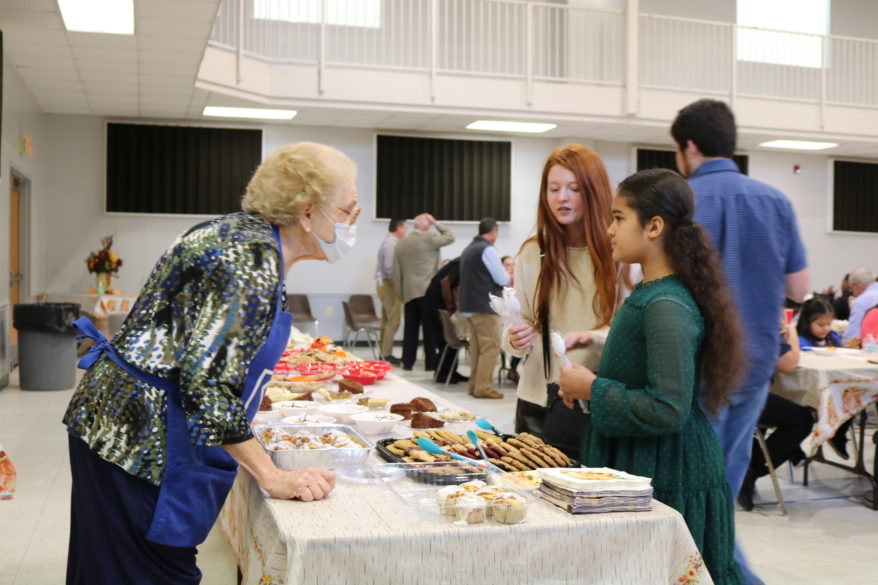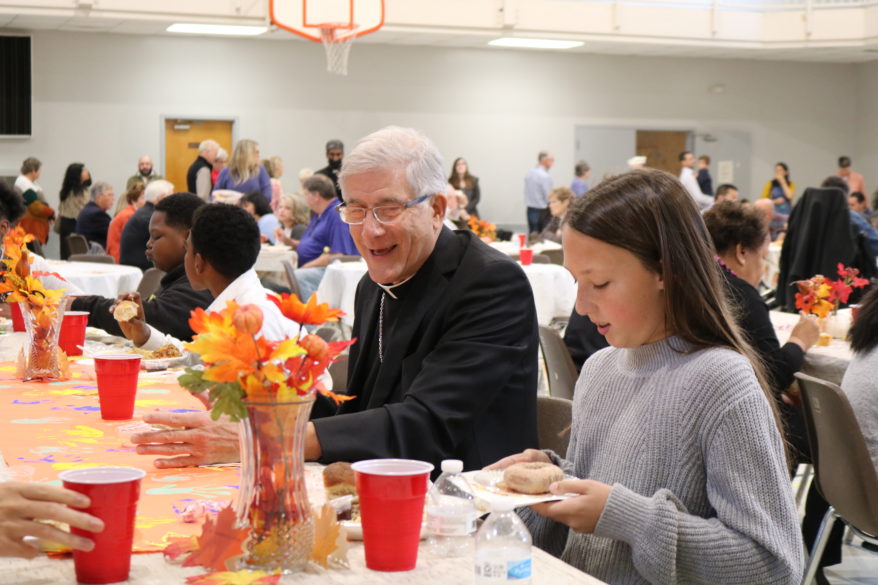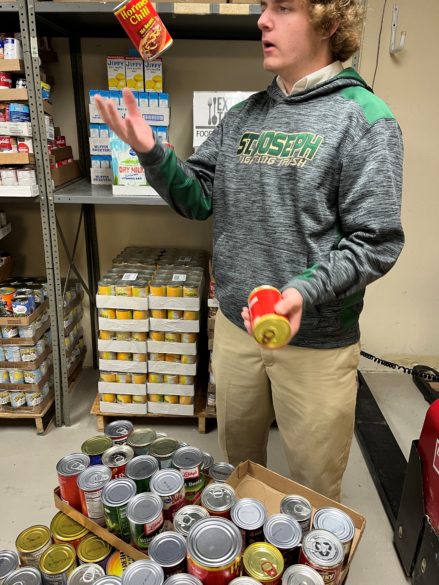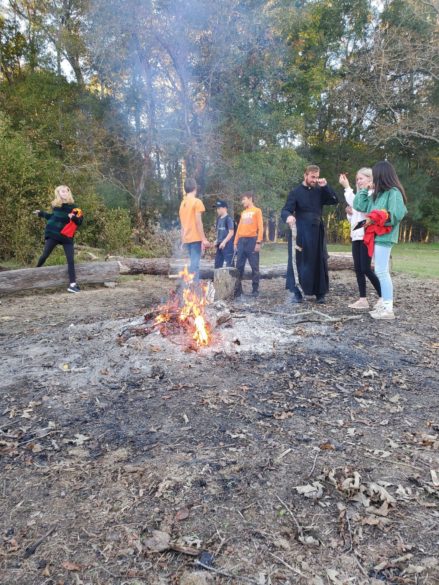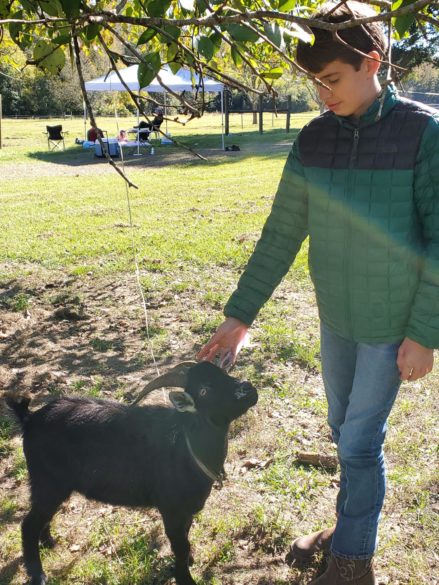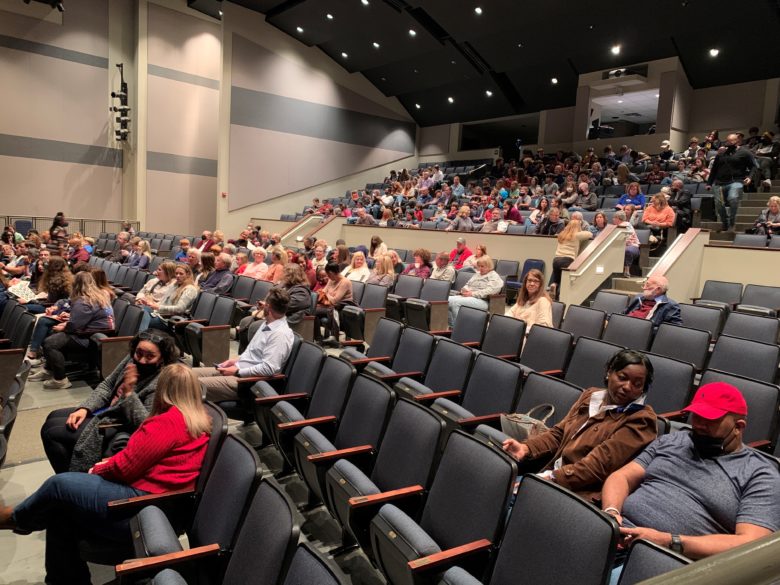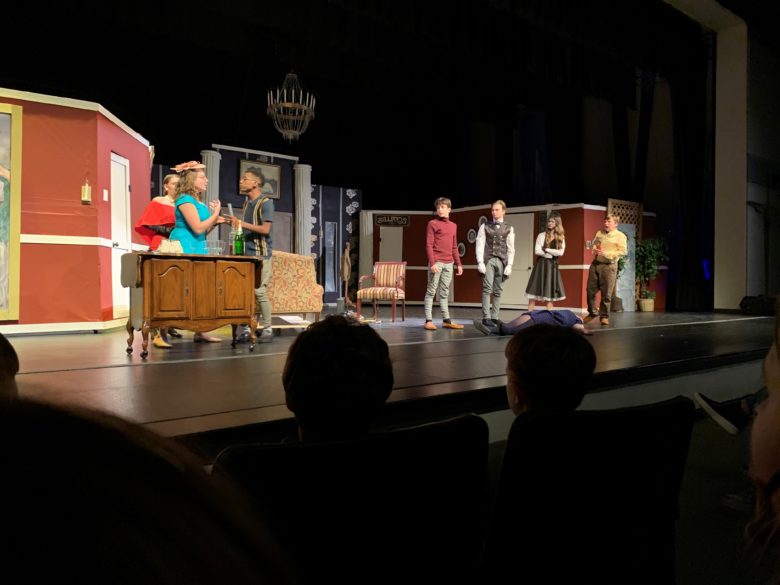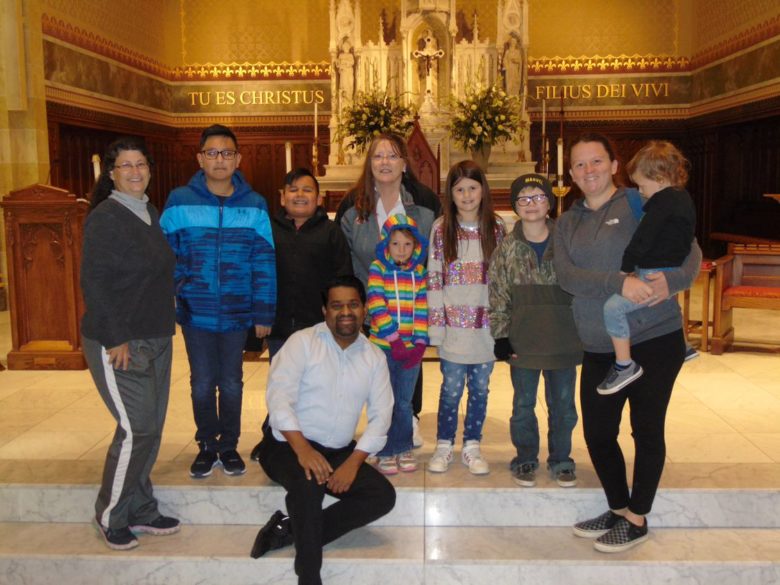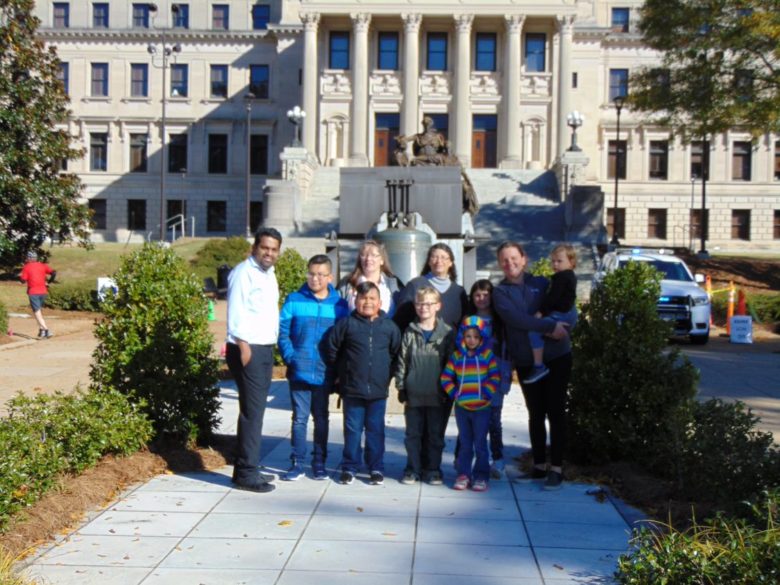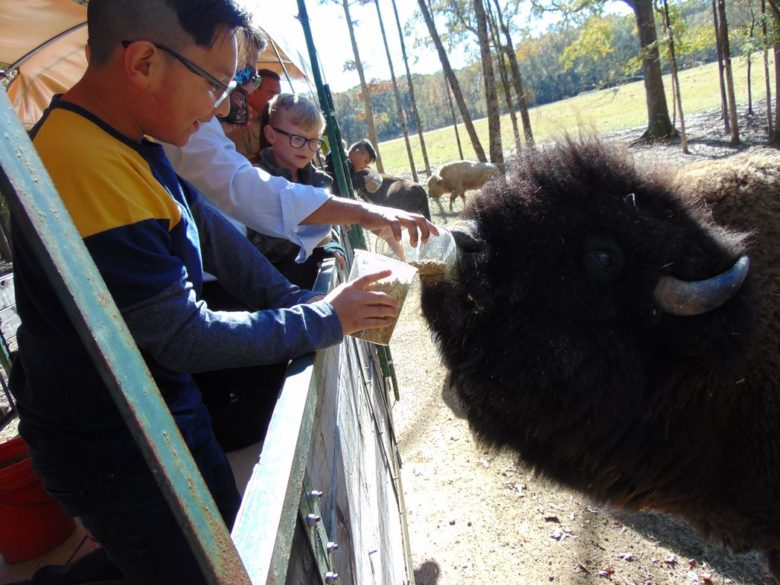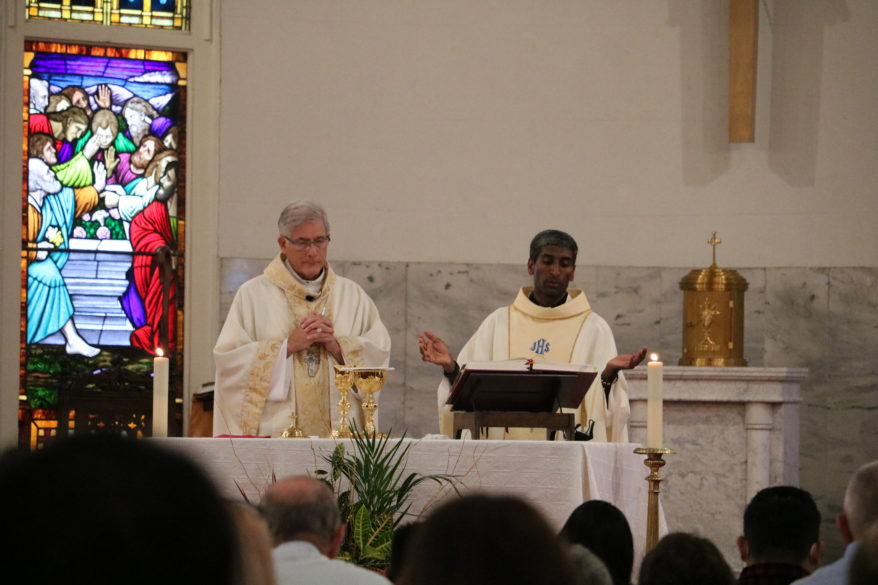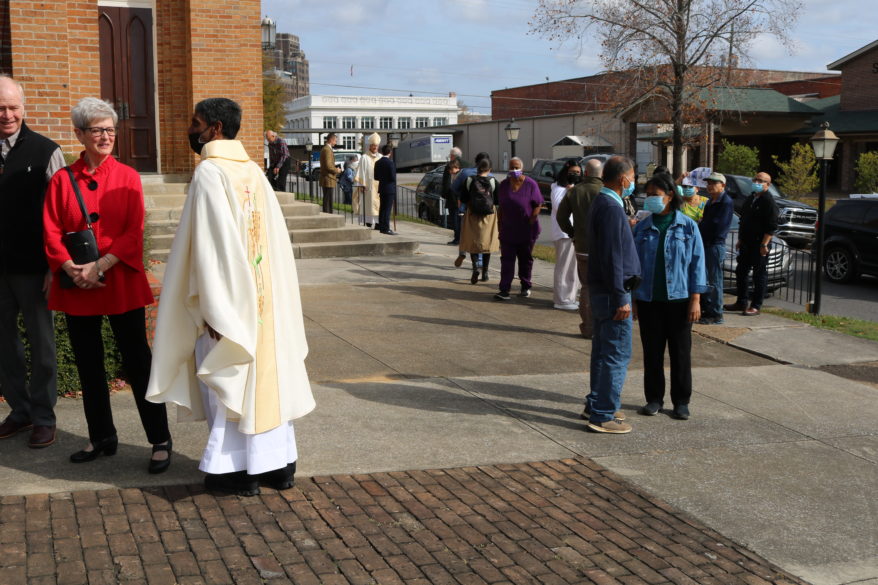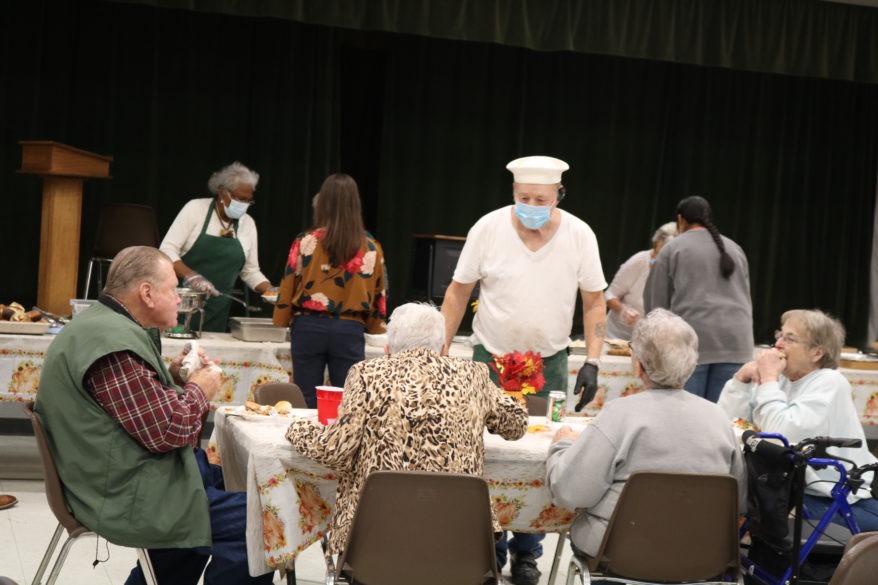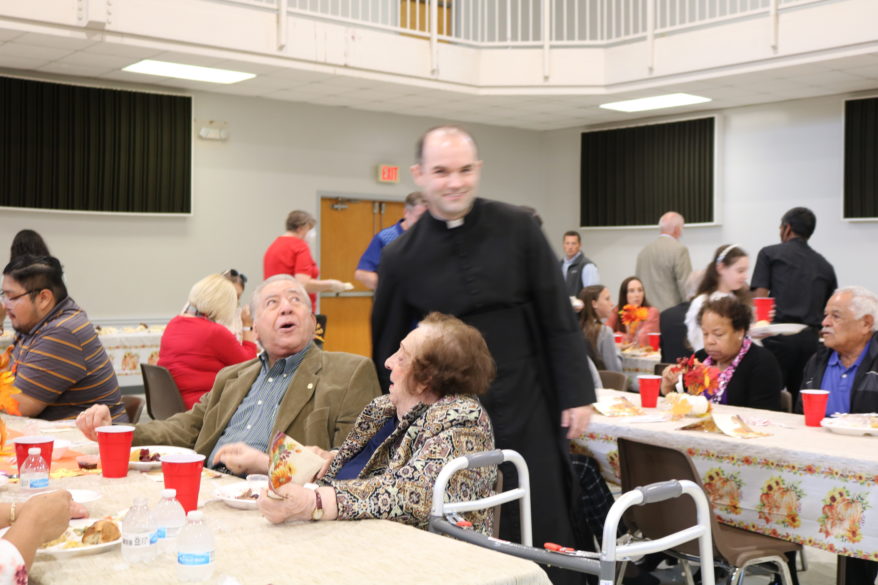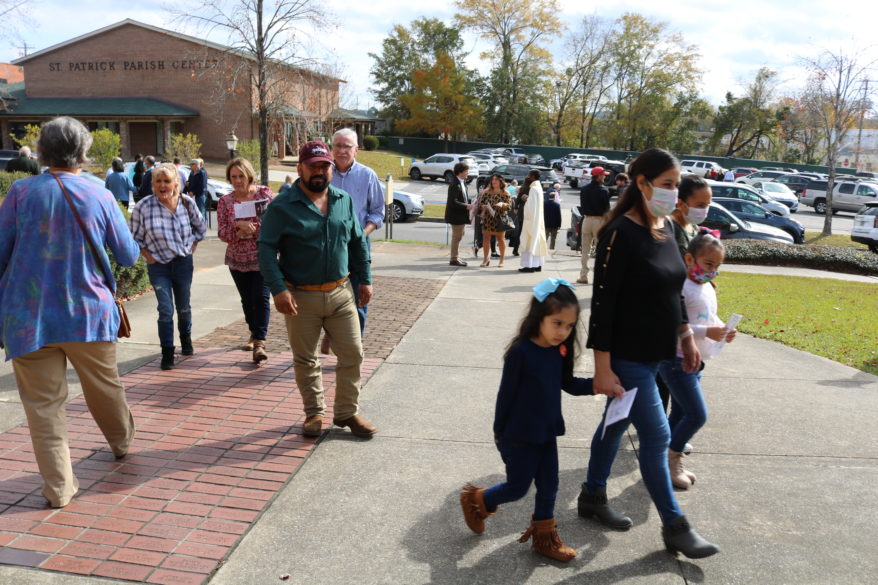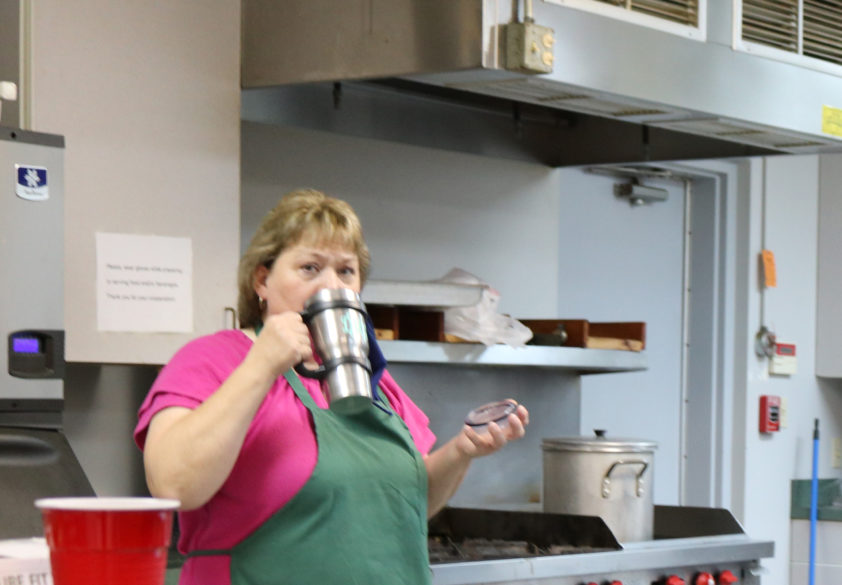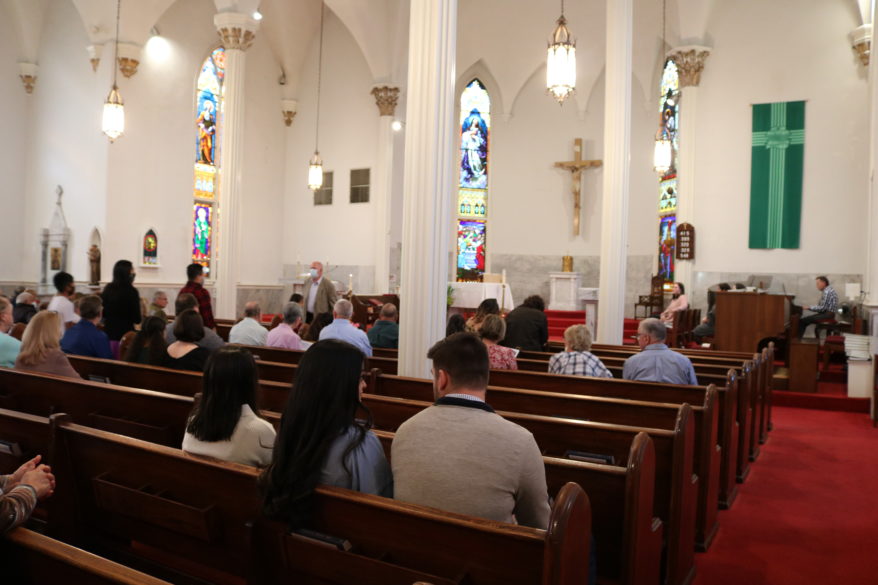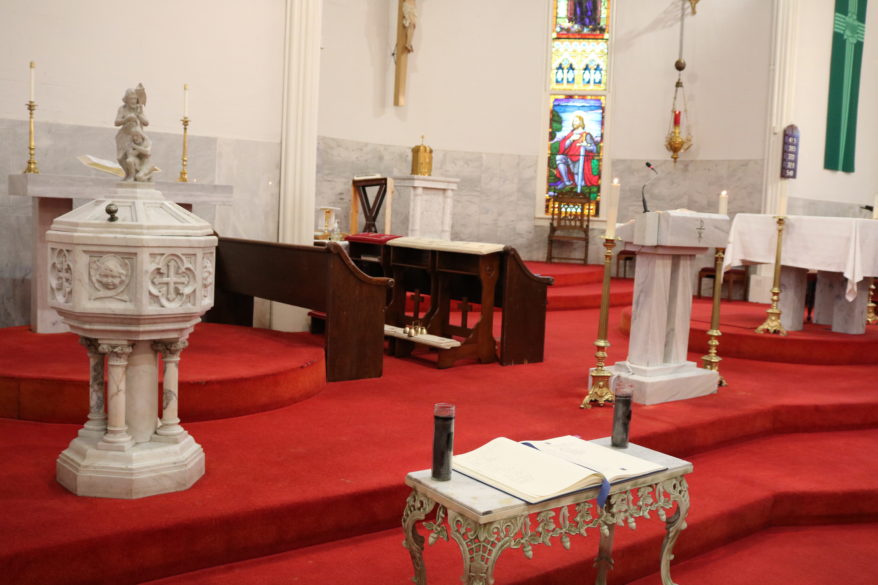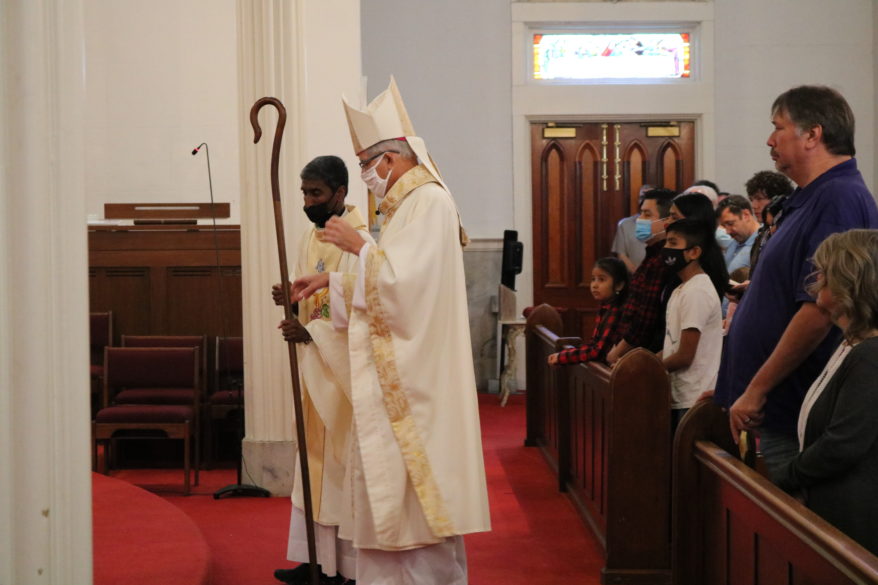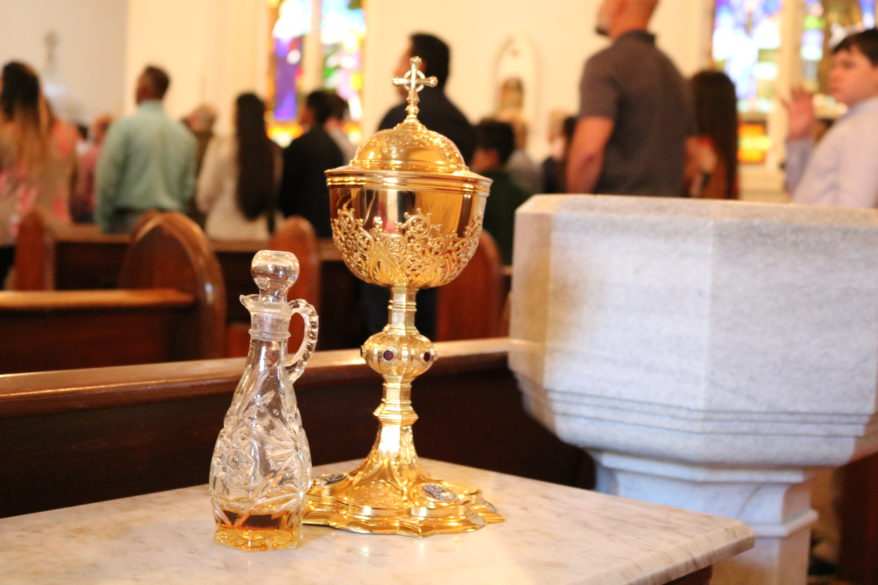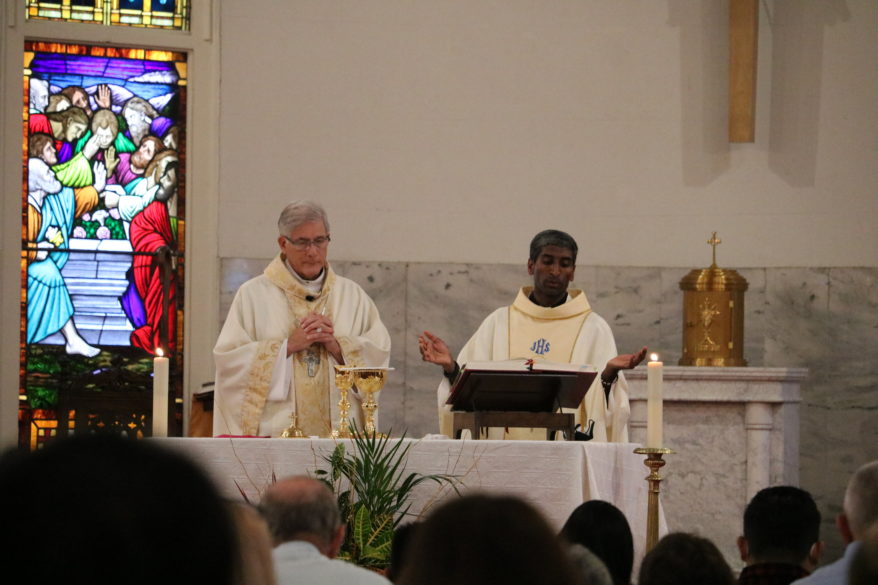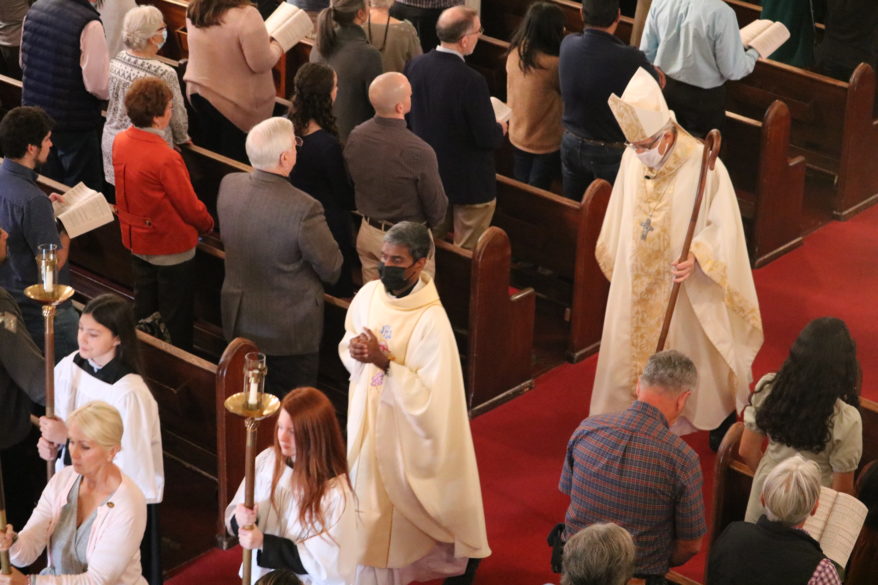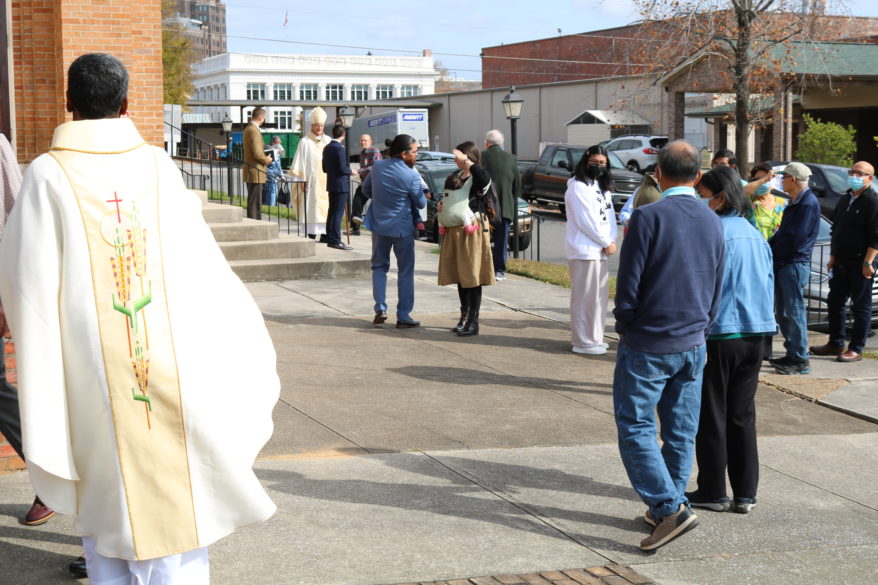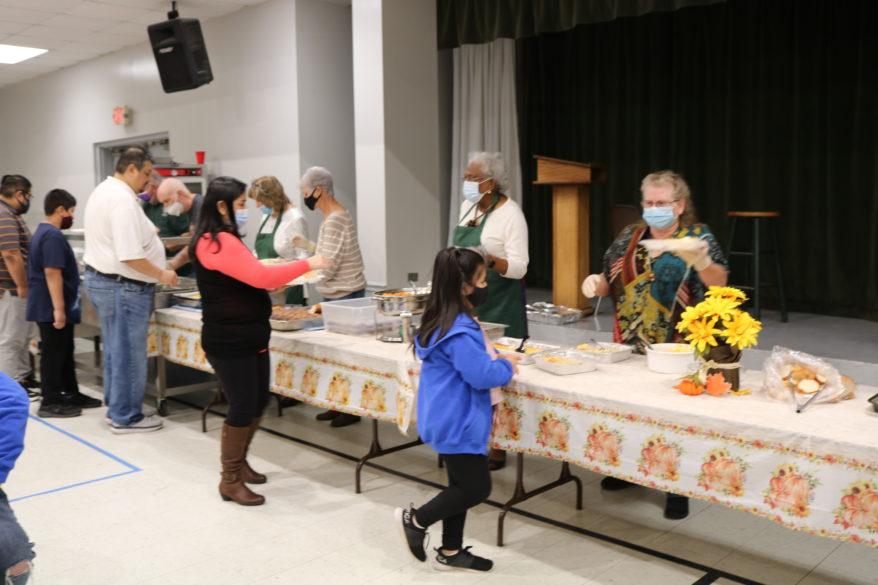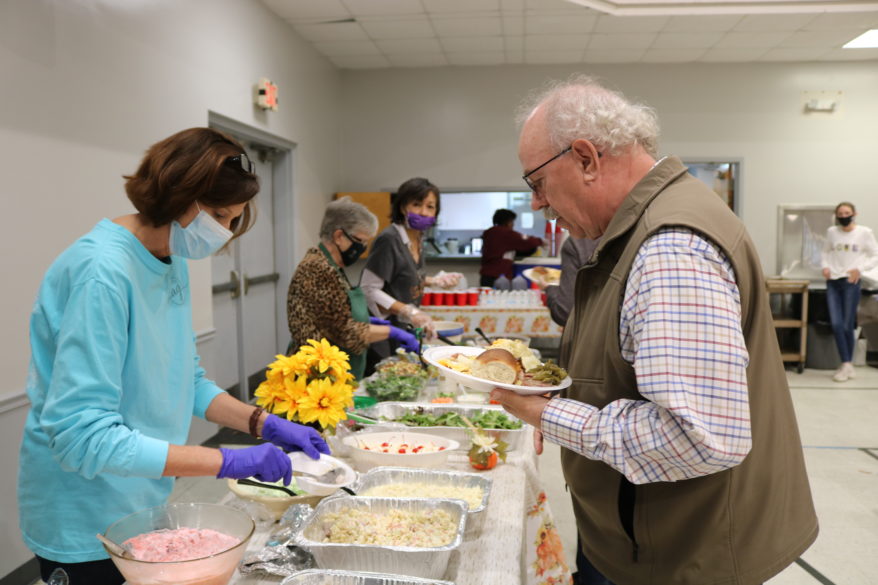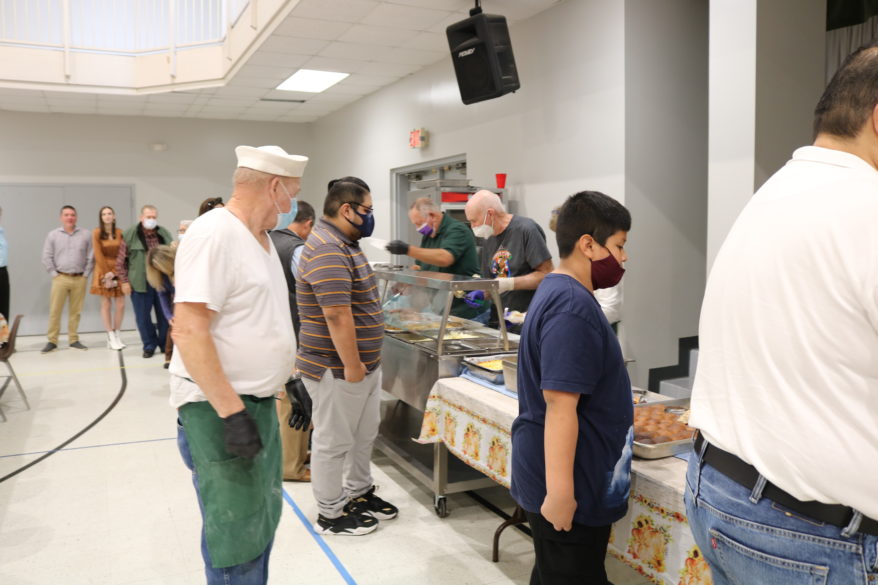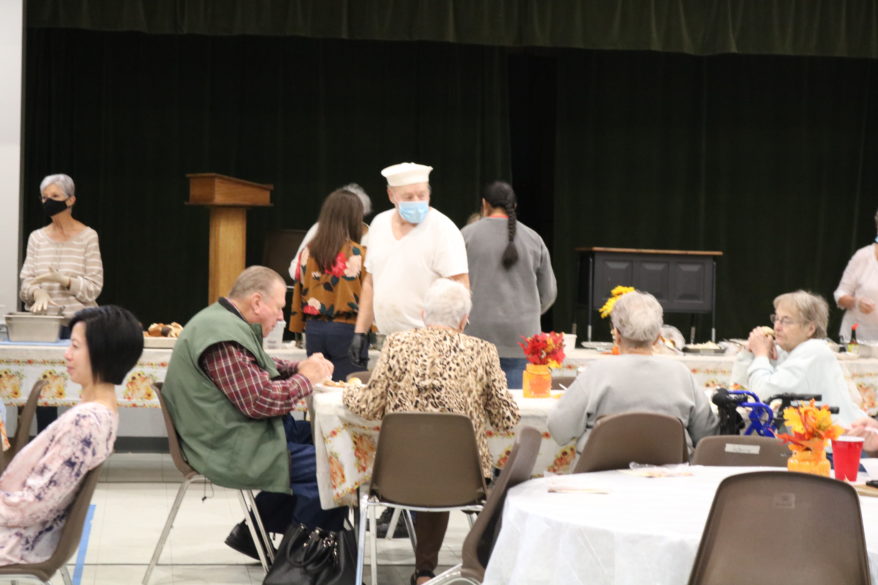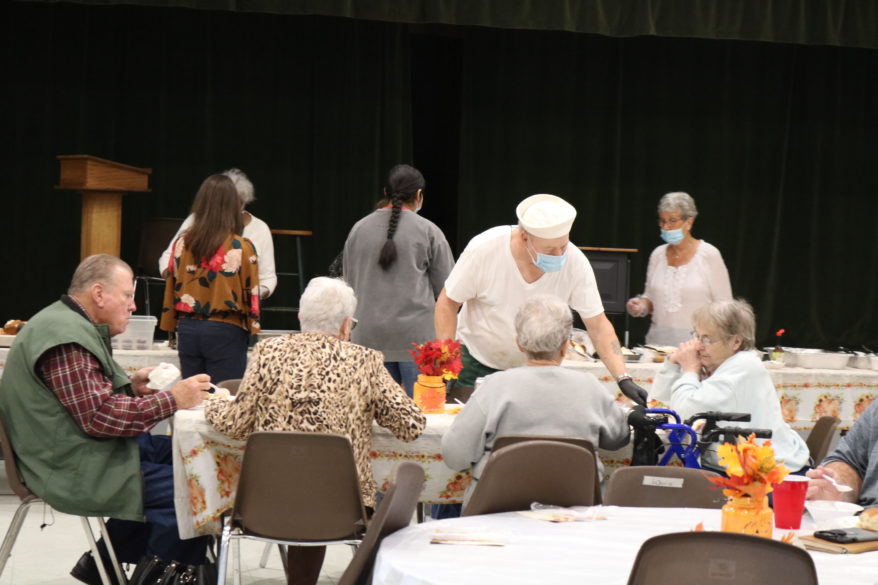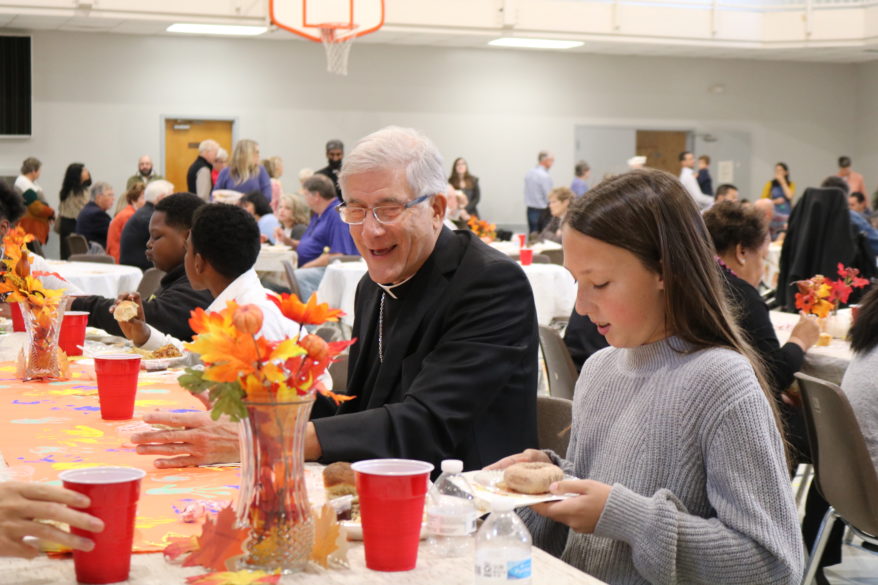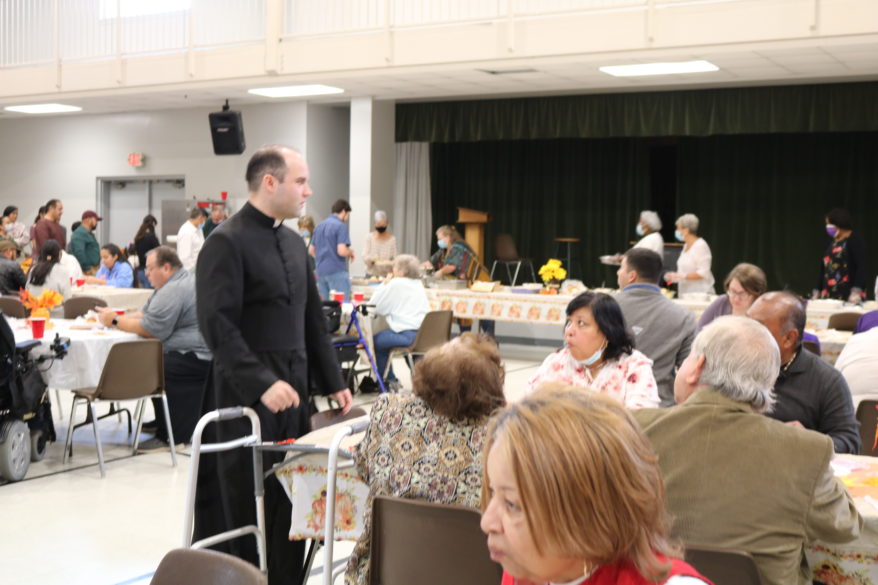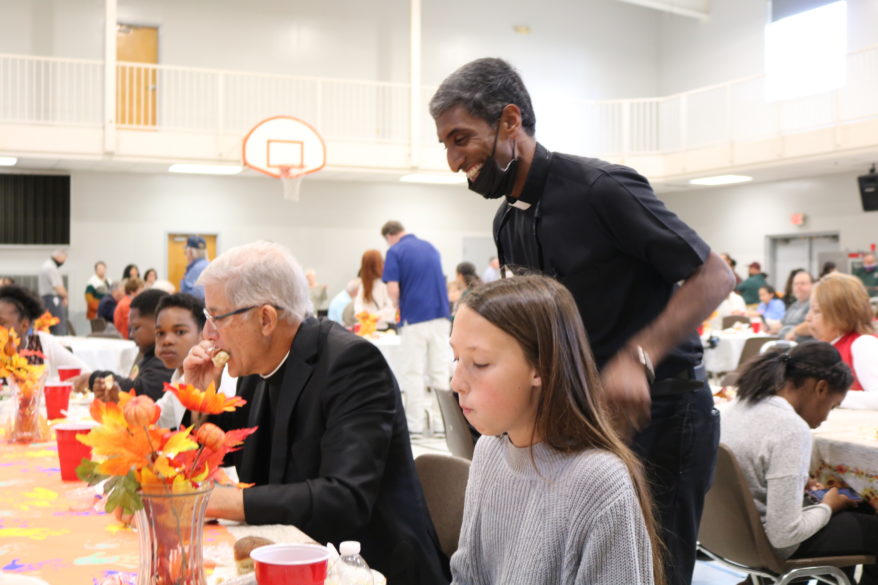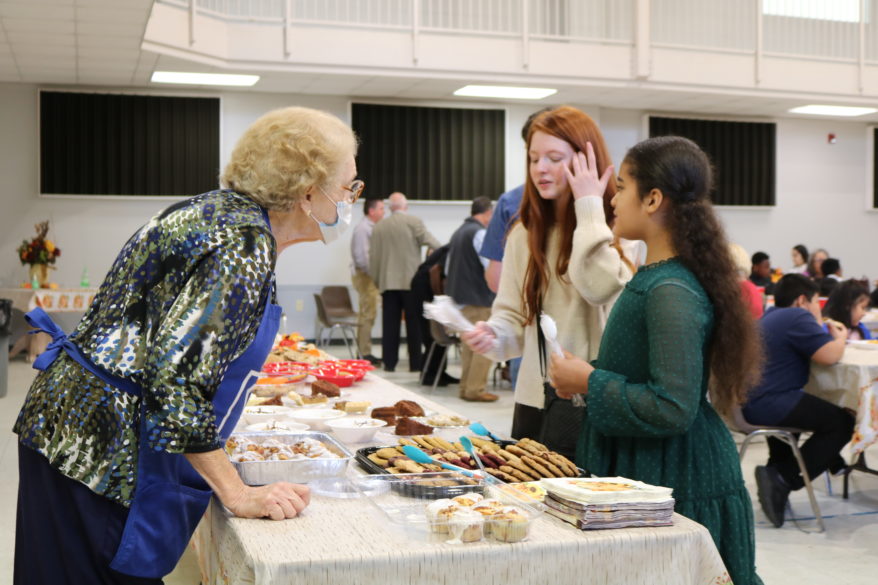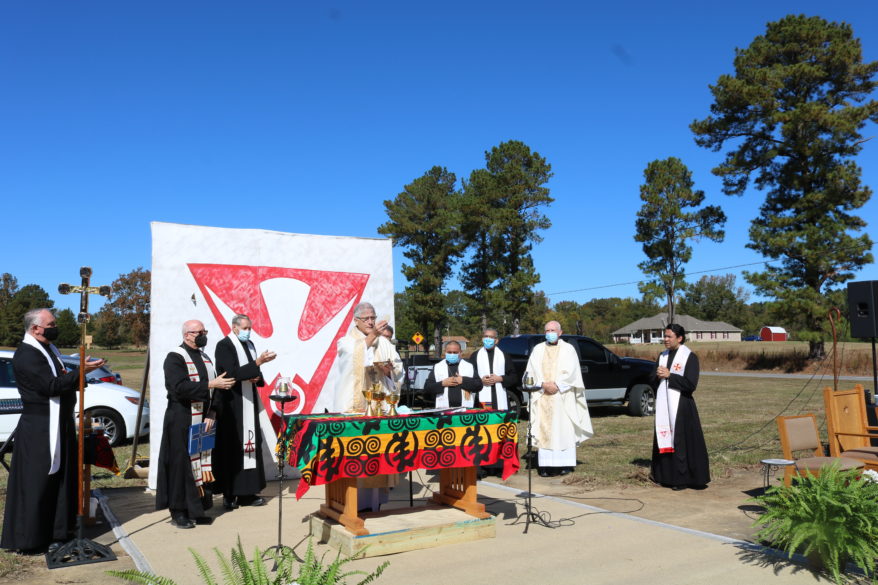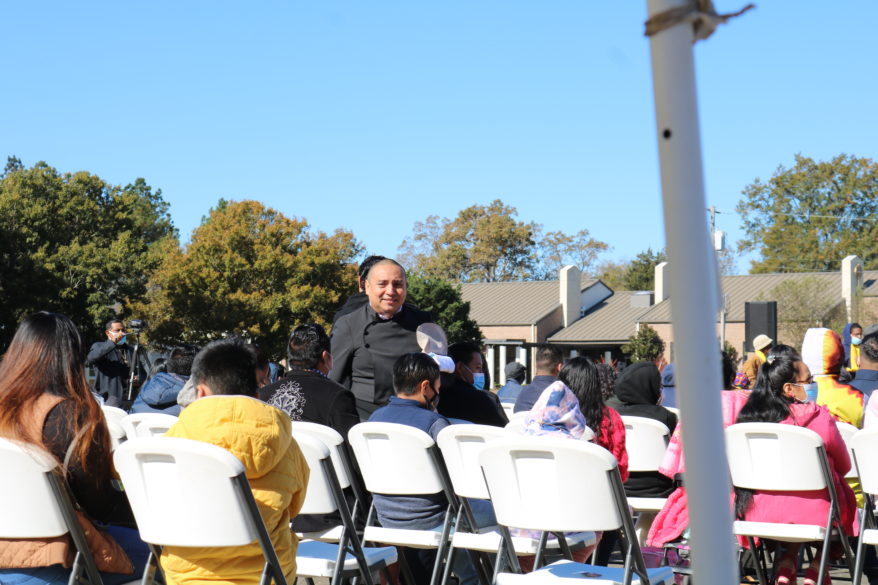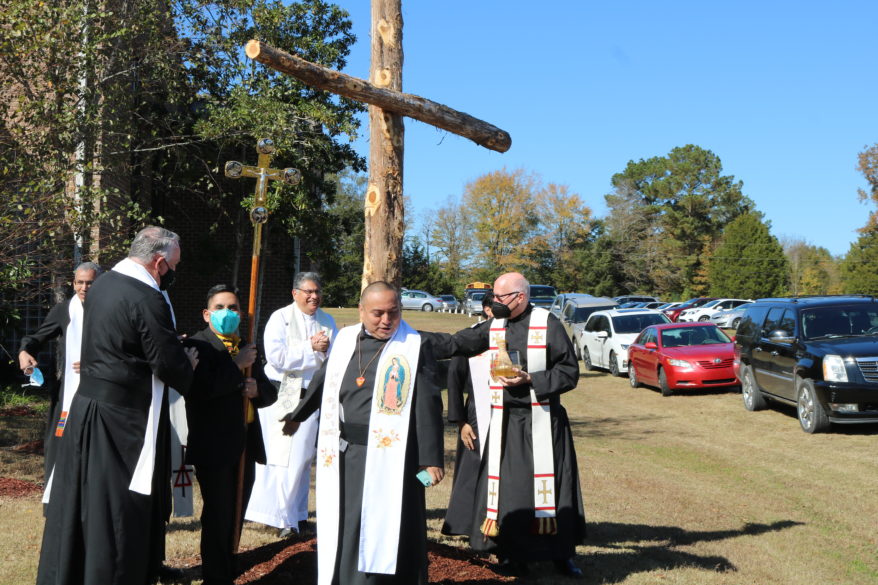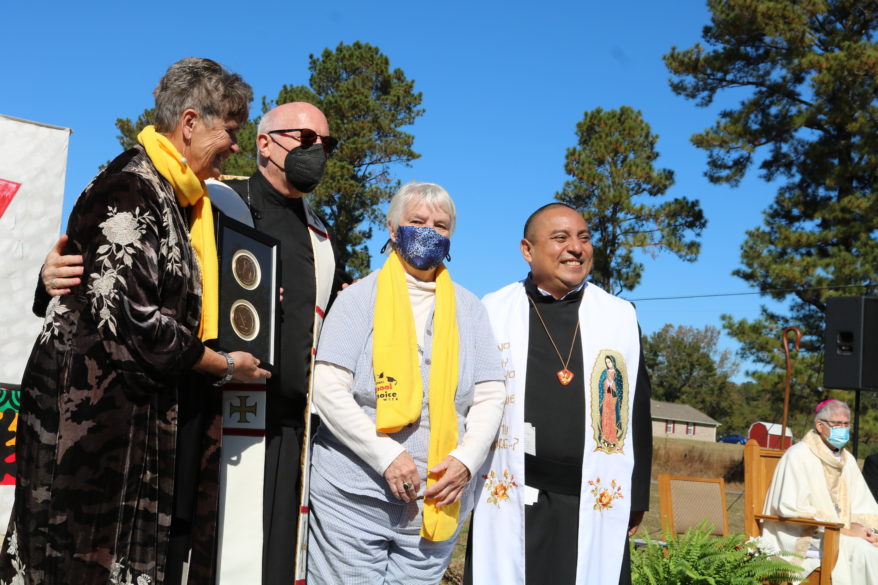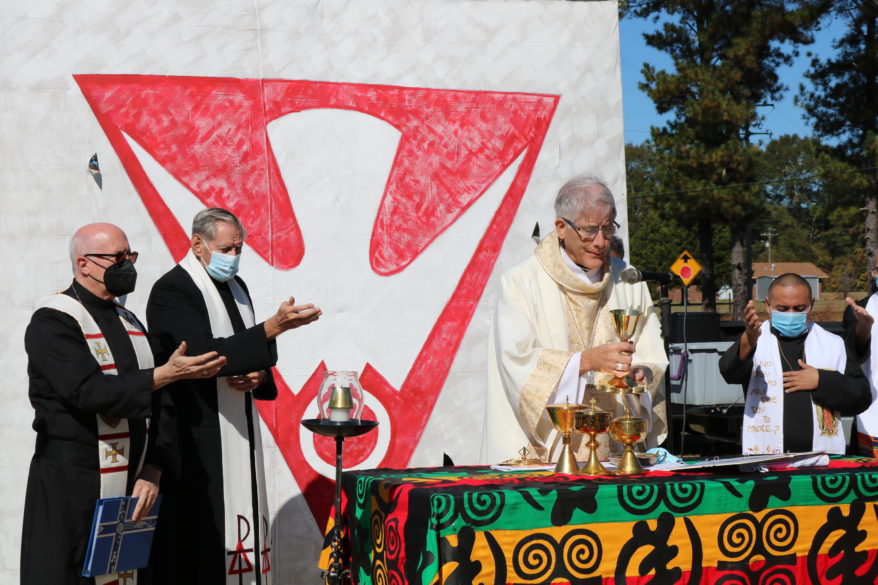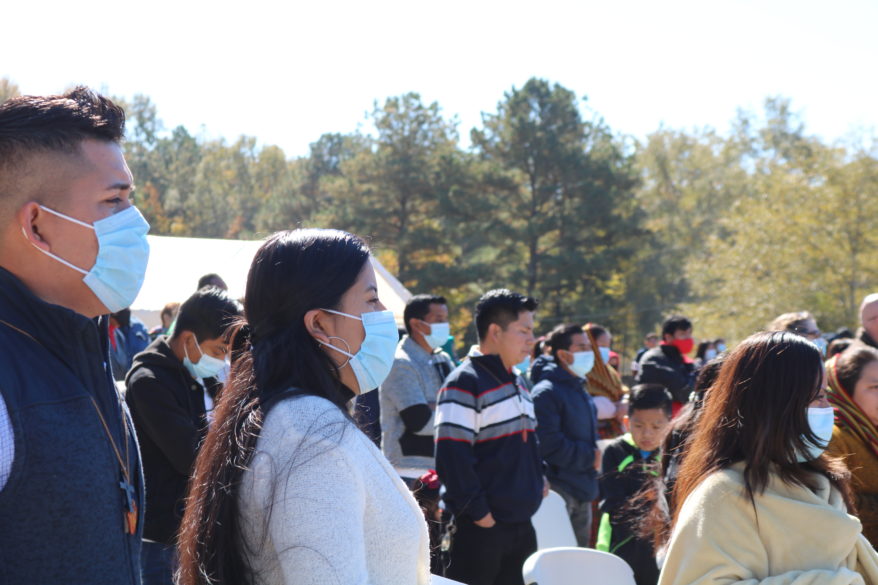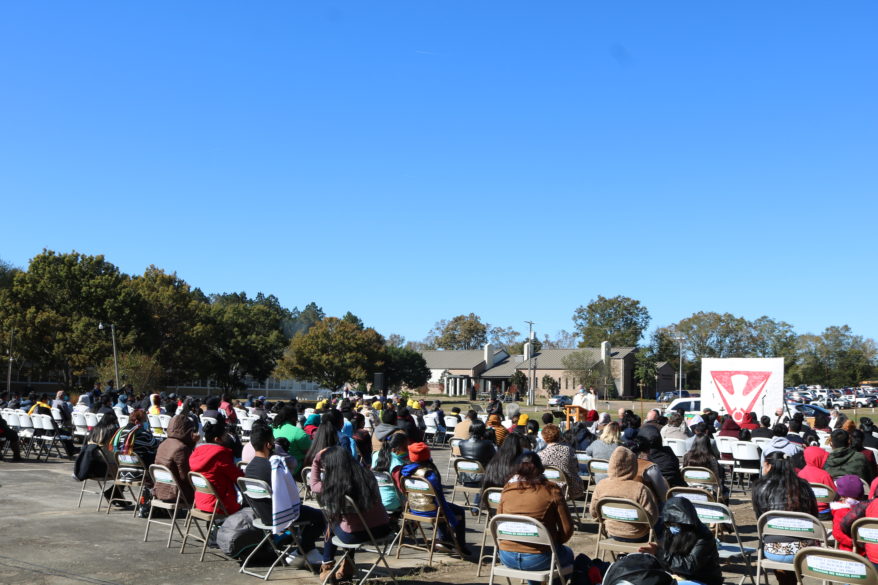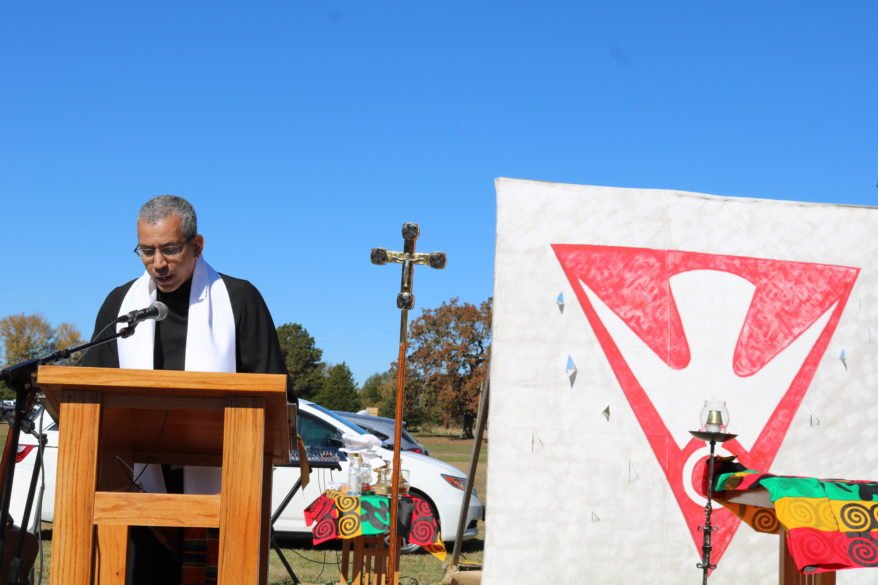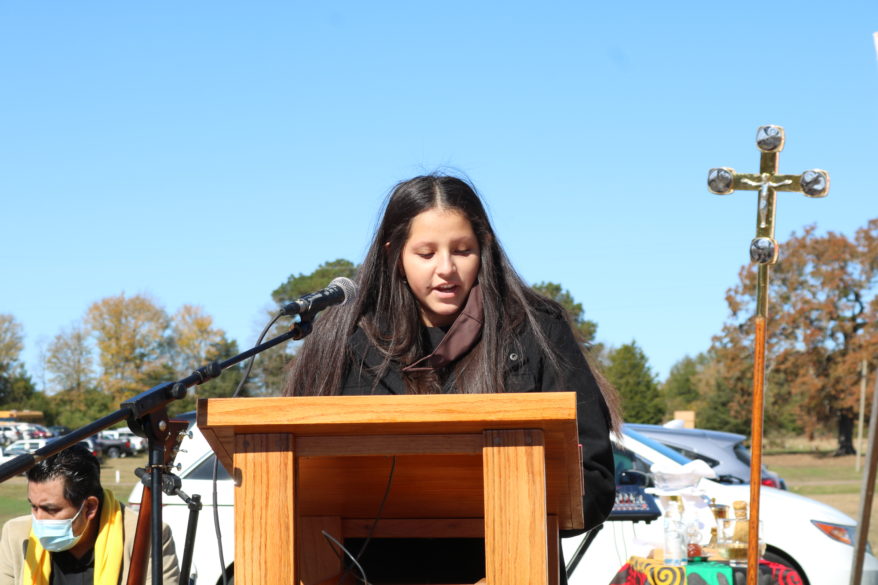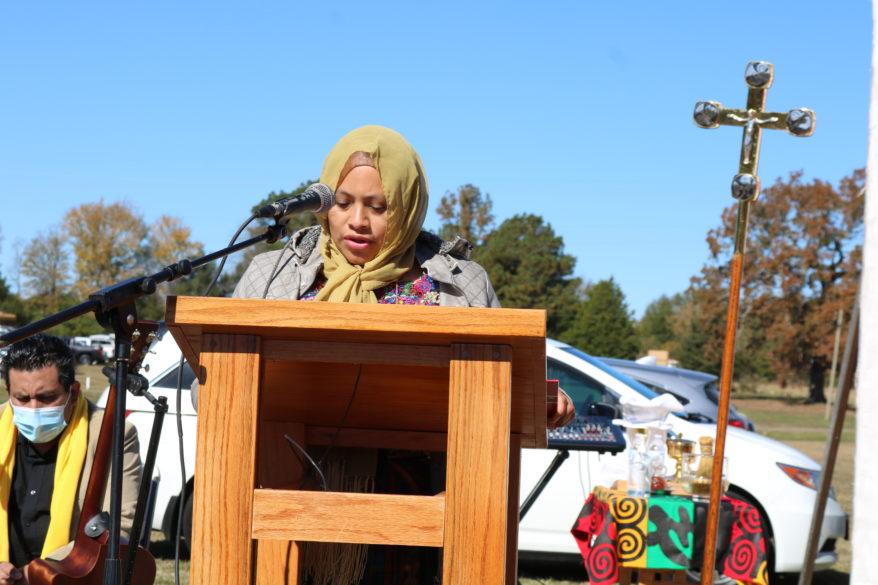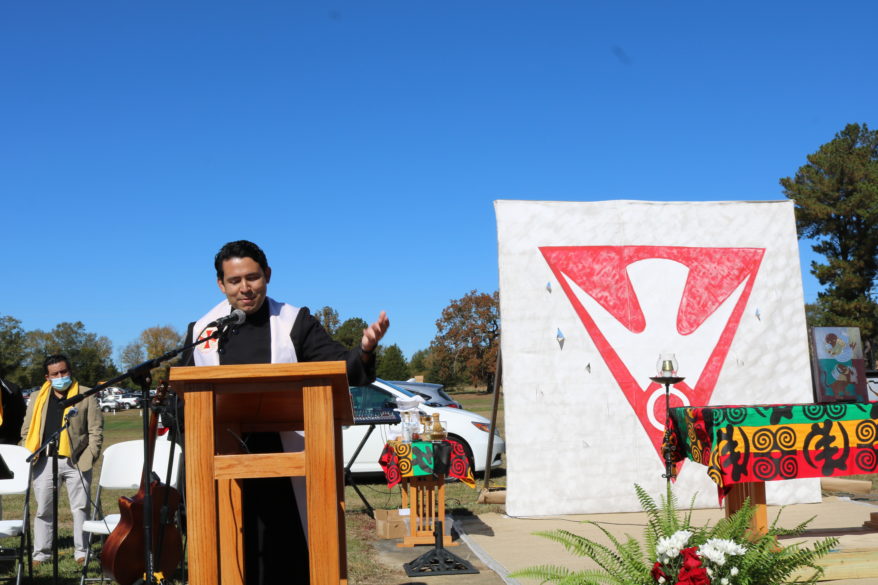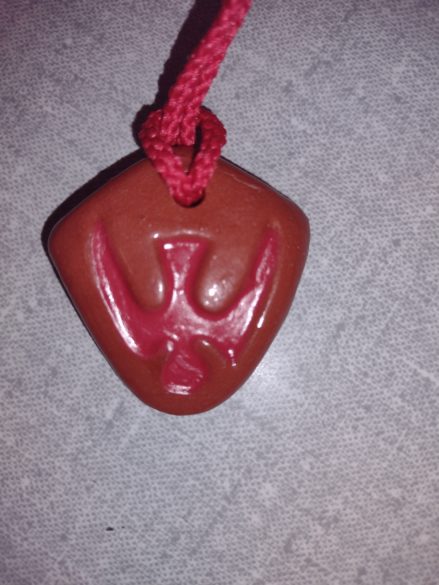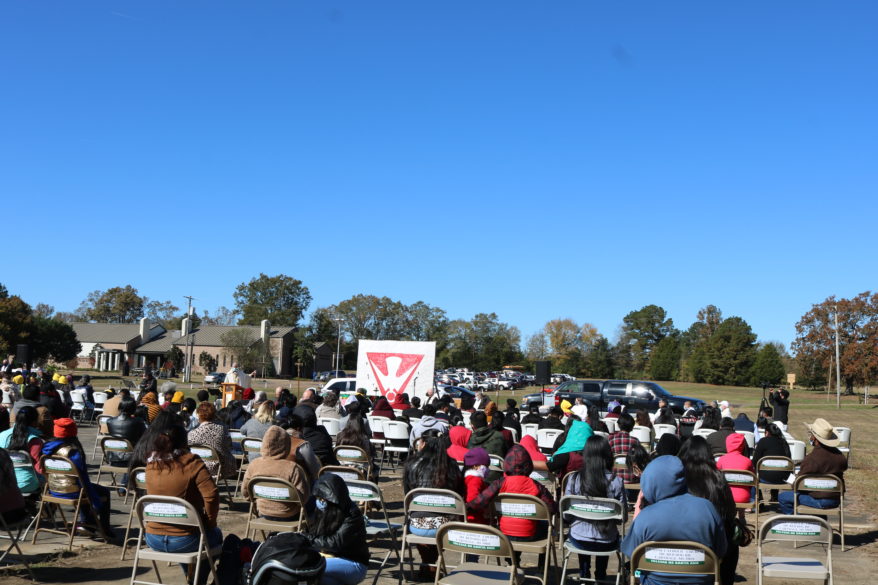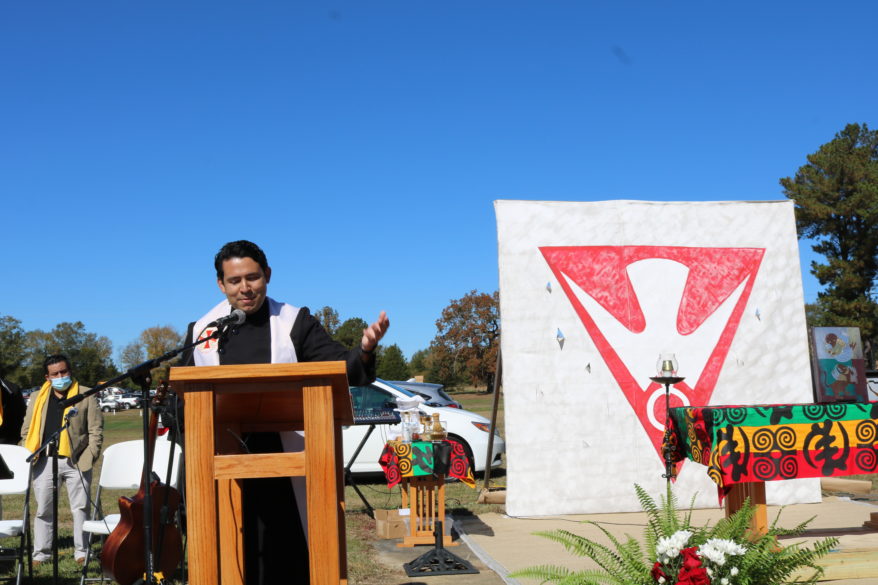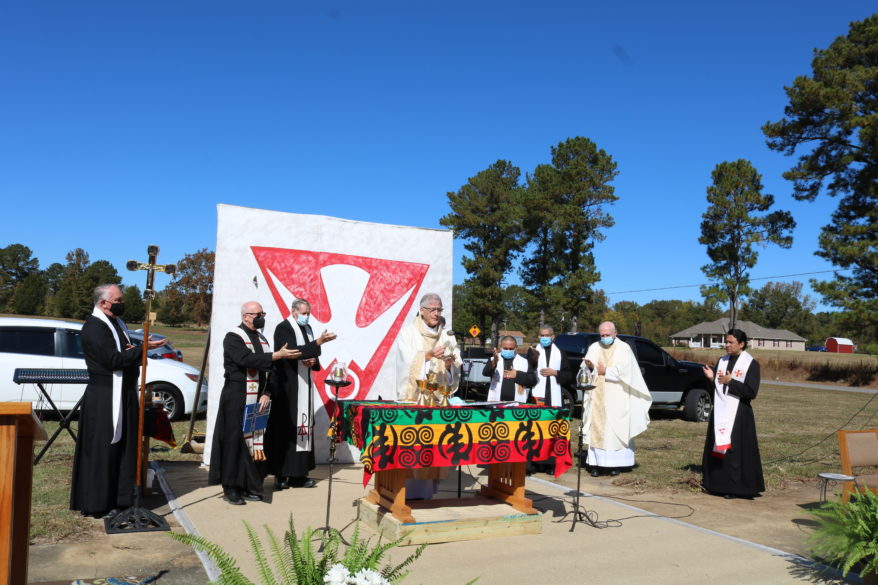By Joanna Puddister King
GREENWOOD – The faith-filled parishioners of Immaculate Heart of Mary in Greenwood refuse to let a break-in that desecrated their parish triumph over their spirit, choosing to forgive and pray for the Holy Spirit to fill the hearts of the perpetrators.
On Wednesday, Jan. 26 choir members arriving for practice discovered their parish had been vandalized. Some parishioners described the scene as if a tornado had blown through it.
The altar was overturned, hymnals were ripped from their spines with papers strewn around the sanctuary, the pulpit was overturned, as well. A statue of Mary, over 100 years old, was pulled down and her face broken into pieces. Many other items were turned over and bent. Also broken was an antique baptismal font.
Most disturbing for some parishioners was that the tabernacle was breached and the Blessed Sacrament removed, it being place on the church’s original altar. But through grace, the hosts did not appear to be touched. Parishioners like Mary Jane Faulkner felt the situation could have been worse.
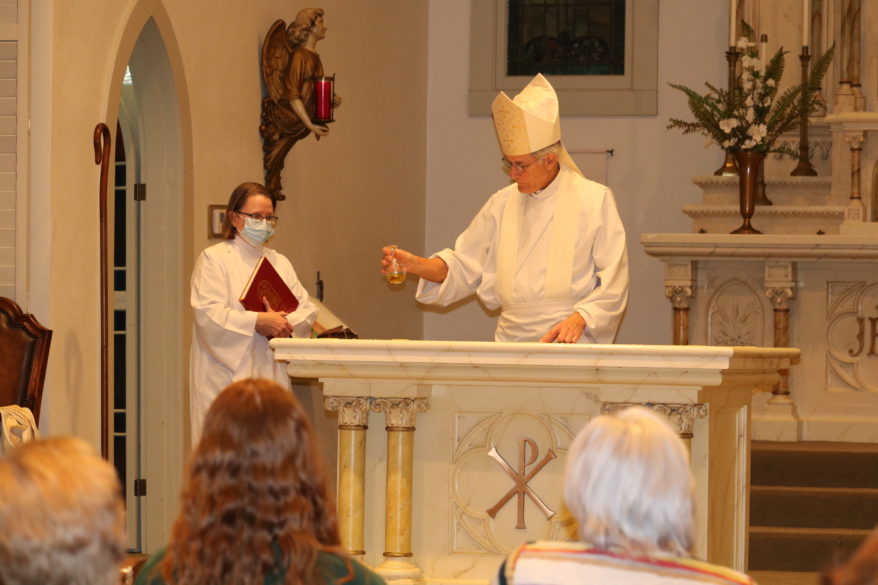
“They didn’t break the windows … they could have caught the church on fire, when they destroyed Mary next to the candles,” said Faulkner, who also works for the parish in communications. “So, we were blessed. It is amazing they didn’t demolish some of the other things they could have,” she concluded.
According to the USCCB at least 120 incidents, like the one occurring at Immaculate Heart, have occurred across 31 states and the District of Columbia since May 2020. Incidents include arson, statues beheaded, limbs cut, and smashed and painted, gravestones defaced with swastikas and anti-Catholic language and American flags next to them burned, and other destruction and vandalism. The conference even has a dedicated page on its website listing news stories that detail vandalism by month, since they began tracking incidents in May of 2020.
Pastor of Immaculate Heart, José de Jesús Sánchez expressed his “shock and grief” over the break-in over social media to the Catholic community, alerting them of the destruction in his parish. He was away at a family wedding in his home country of Mexico at the time of the incident.
People were hit hard by the images shared by Father Sánchez, including Bishop Joseph Kopacz, who said “at the same time, much prayer has been offered” from those across the diocese through the power of social media.
Amid all of the destruction at Immaculate Heart, Bishop Kopacz traveled to the parish on Wednesday, Feb. 1 to reconsecrate the church.
“We will reconsecrate this church once again to God in the Lord,” said Bishop Kopacz. “With great faith, hope and love with the desire to truly go forward, knowing that we have reconciled on a very deep level.”
Some in the parish, felt that the intent behind the destruction was to have parishioners lose their faith but the faith of the Immaculate Heart community is strong.
“We give thanks for this gift of faith, that can be assaulted, that can be hurt, but cannot be overcome in the Lord,” said Bishop Kopacz.
During his homily, Bishop Kopacz spoke of the destruction and evil that occurred within the walls of the church, mentioning the overturned pulpit and altar.
“The Word of God, another sacred part of who we are, was overturned, as if to say ‘We don’t want this Word proclaimed from this pulpit,’” said Bishop Kopacz, likening the destruction as malice. “That’s not just juvenile, ‘let’s just wreak a little havoc in this building.’”
Additionally, mentioned was the overturned altar and disturbed sacrament with Bishop Kopacz stating that “it was a deliberate blow to all that is sacred to us.”
As a part of the reconsecration of the church, Bishop Kopacz took great care in anointing the altar and with Chrism, in addition to the use of holy water to renew the baptismal promise of those present. “This seeks to make right, what has been wronged,” he said.
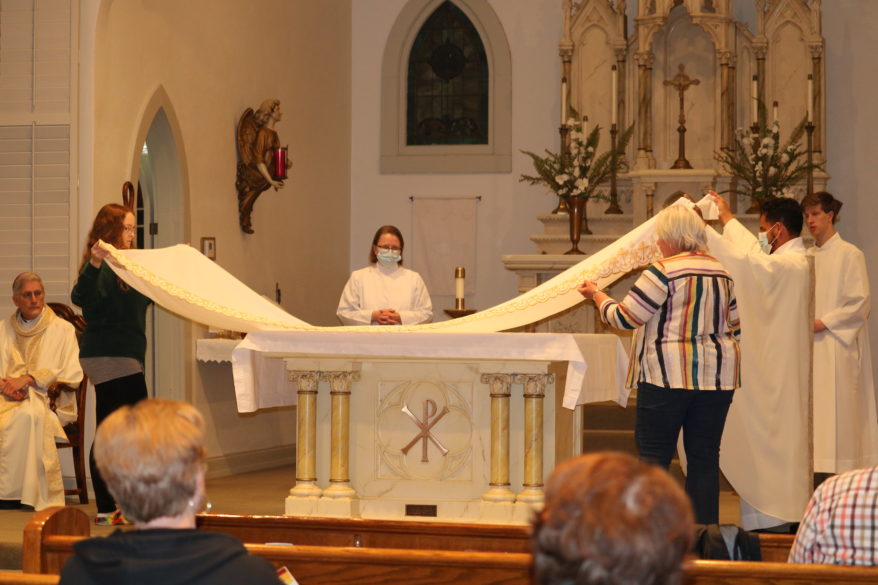
“Our altar represents Christ – it is Christ. … In the anointing, we are allowing the Lord to again come before us in a most powerful way to be our Good Shepherd and for us to know Him. For us to then enter deeply into the mystery of his life. … Heaven and earth are joined together each time we celebrate the Eucharist.”
After the Mass, parishioners like Faulkner expressed their gratitude and were moved by the beauty in the care of the reconsecration.
“I have never seen anything like it. It was extremely moving and beautiful,” said Faulkner.
Father Sánchez gave thanks for the experience of the reconsecration and was grateful for the feeling of hope, also witnessing a consecration of a church for the first time. “It was really beautiful and we know that we are not alone.”
“It is a new opportunity for all of us in the Body of Christ … and we can say to the enemy that if Christ is with us, who is against us.”
Parish coordinator and director of religious education, Emelia Joseph, who has worked tirelessly getting new keys, meeting with police officers and more in the wake of the break-in, is thankful for the support of the Greenwood community and the people of the diocese.
“We know through the grace of God and all the people who have contacted us, with prayer and their support, that we are not only going to rally through this, but we are going to be stronger than ever.”
